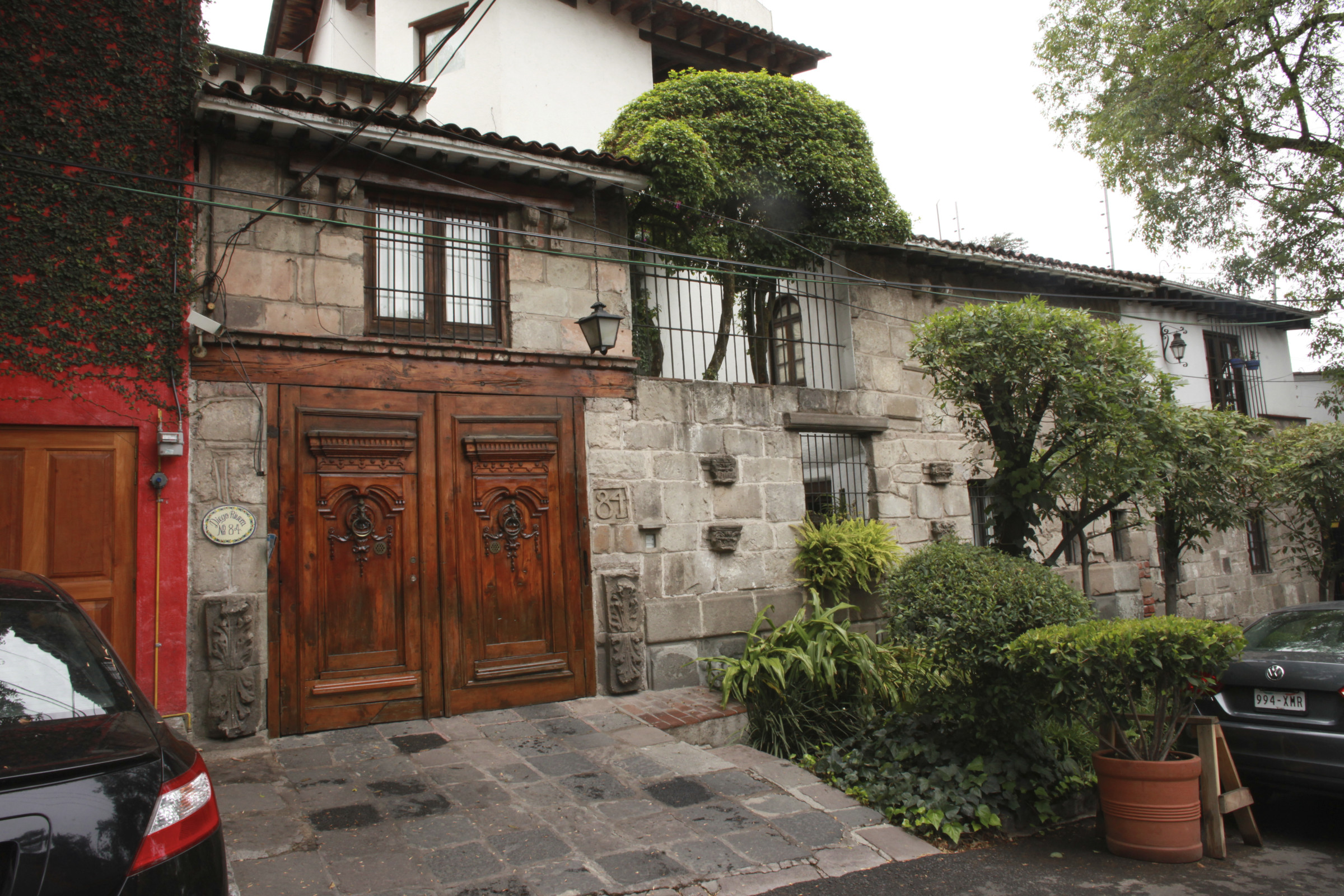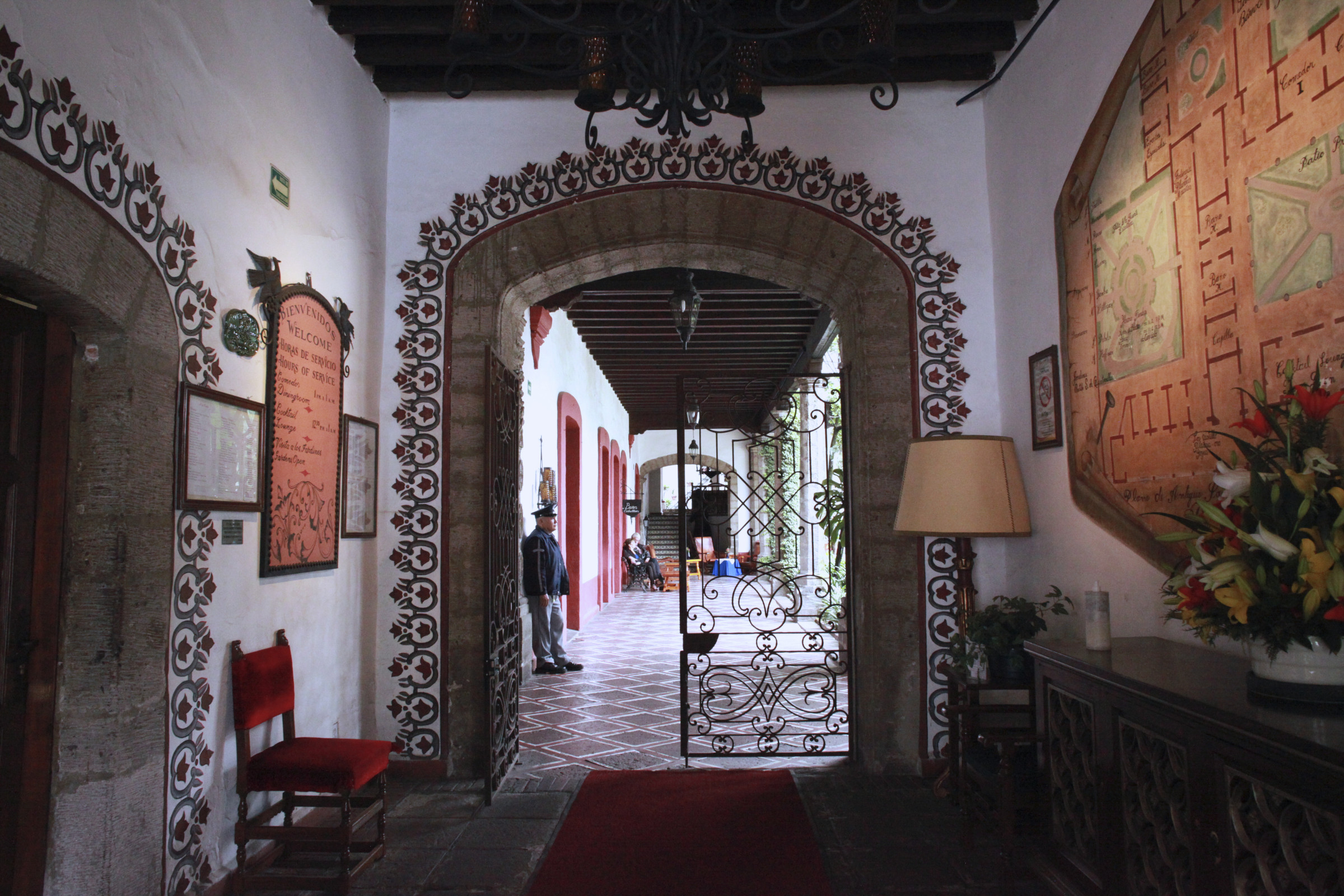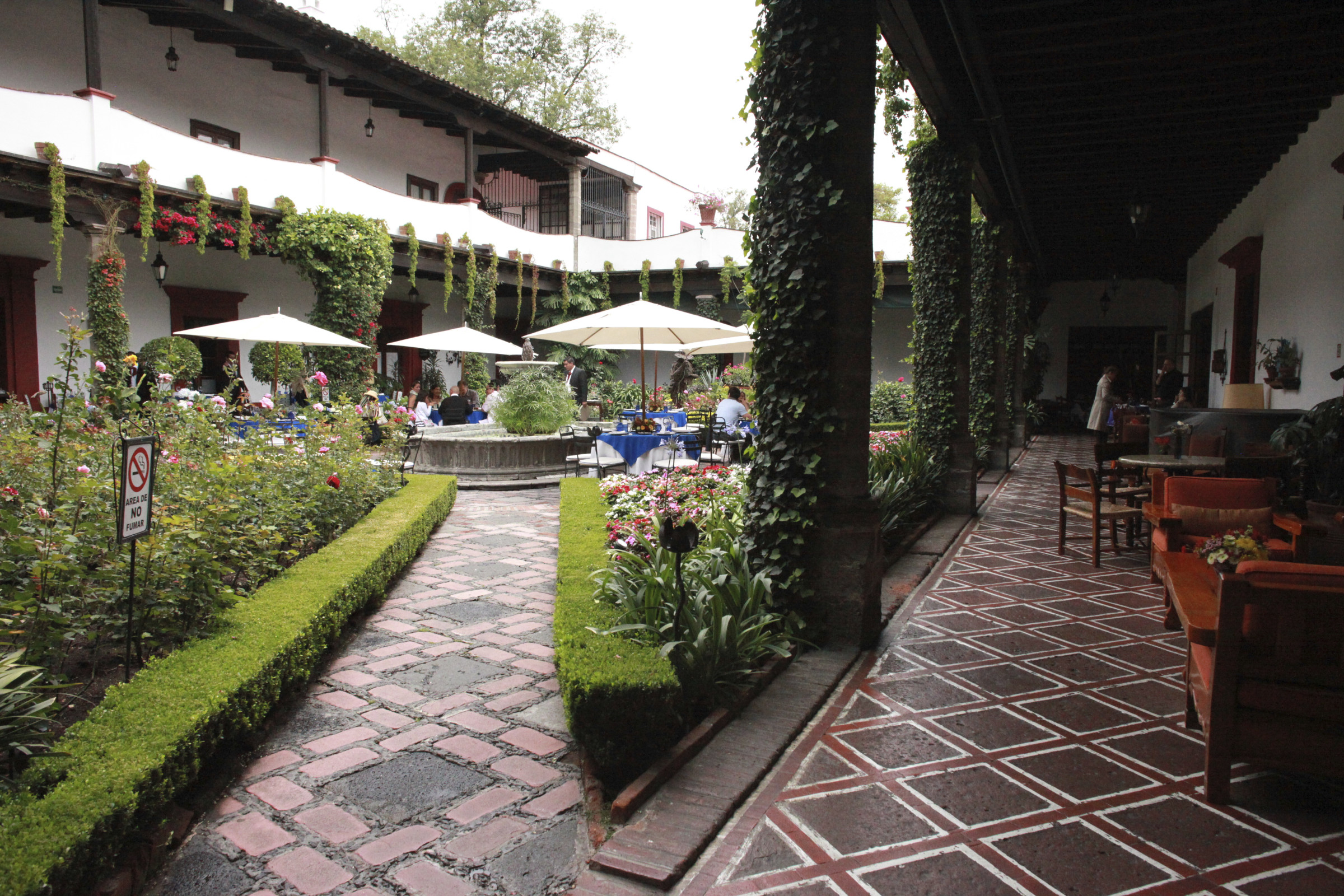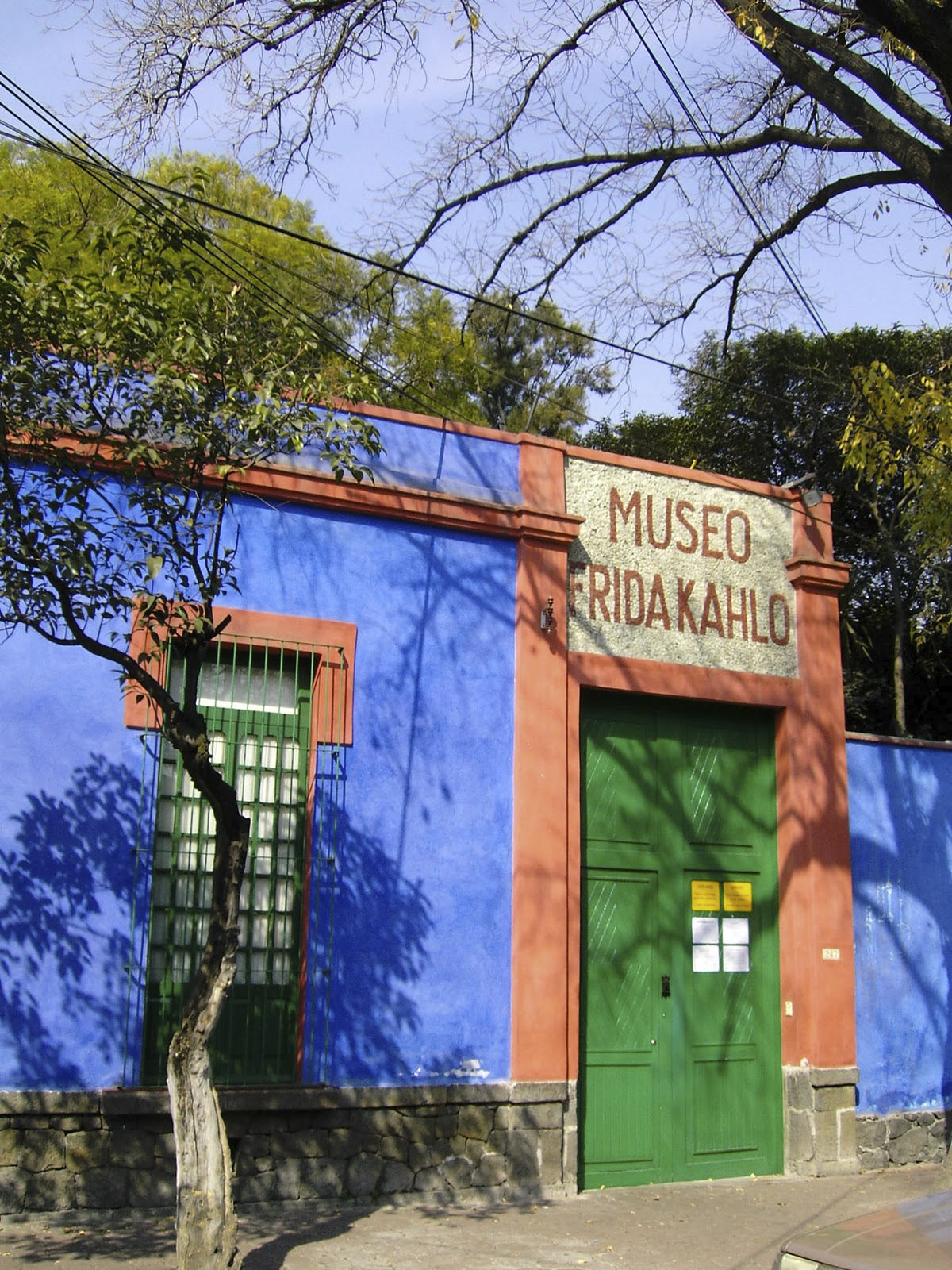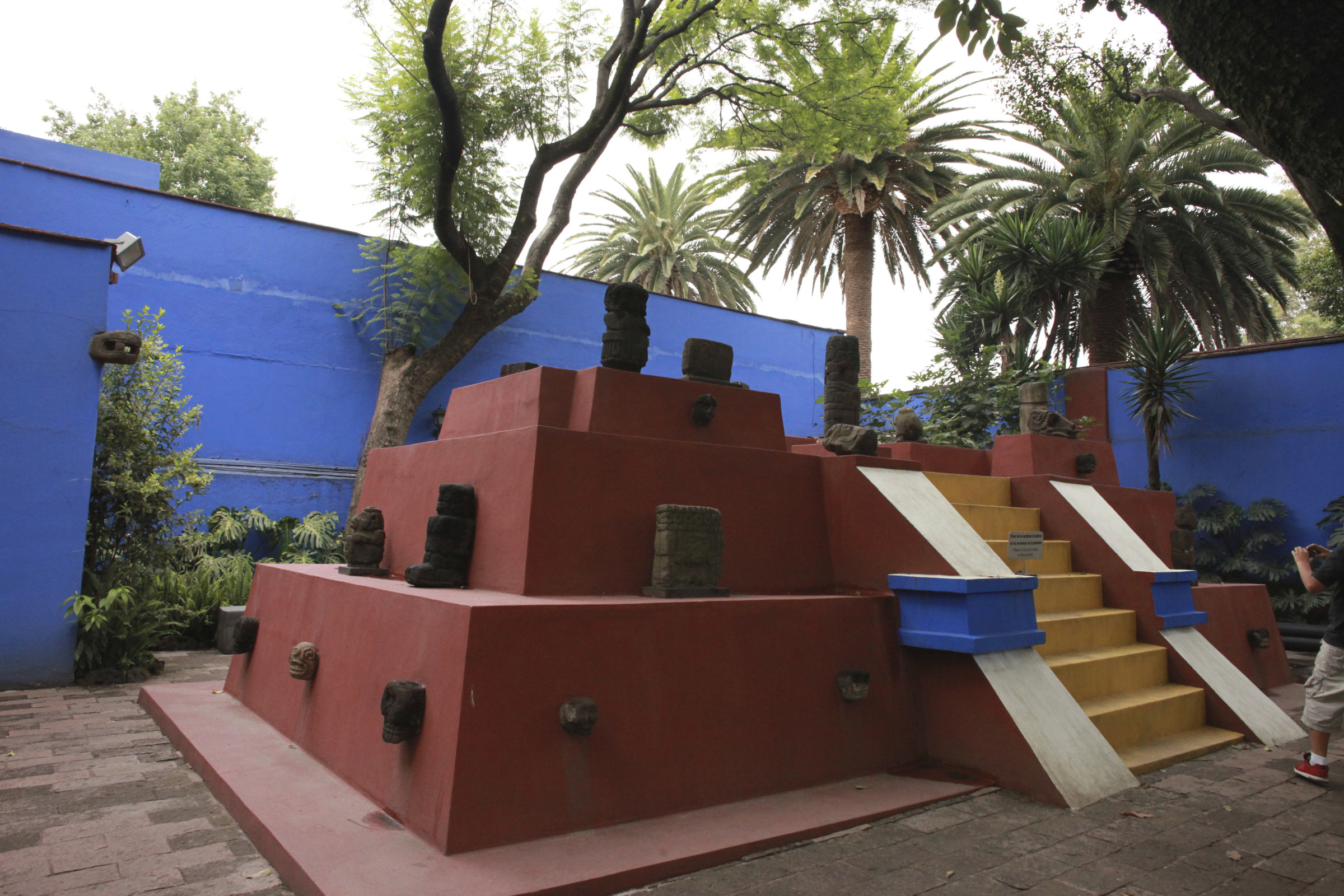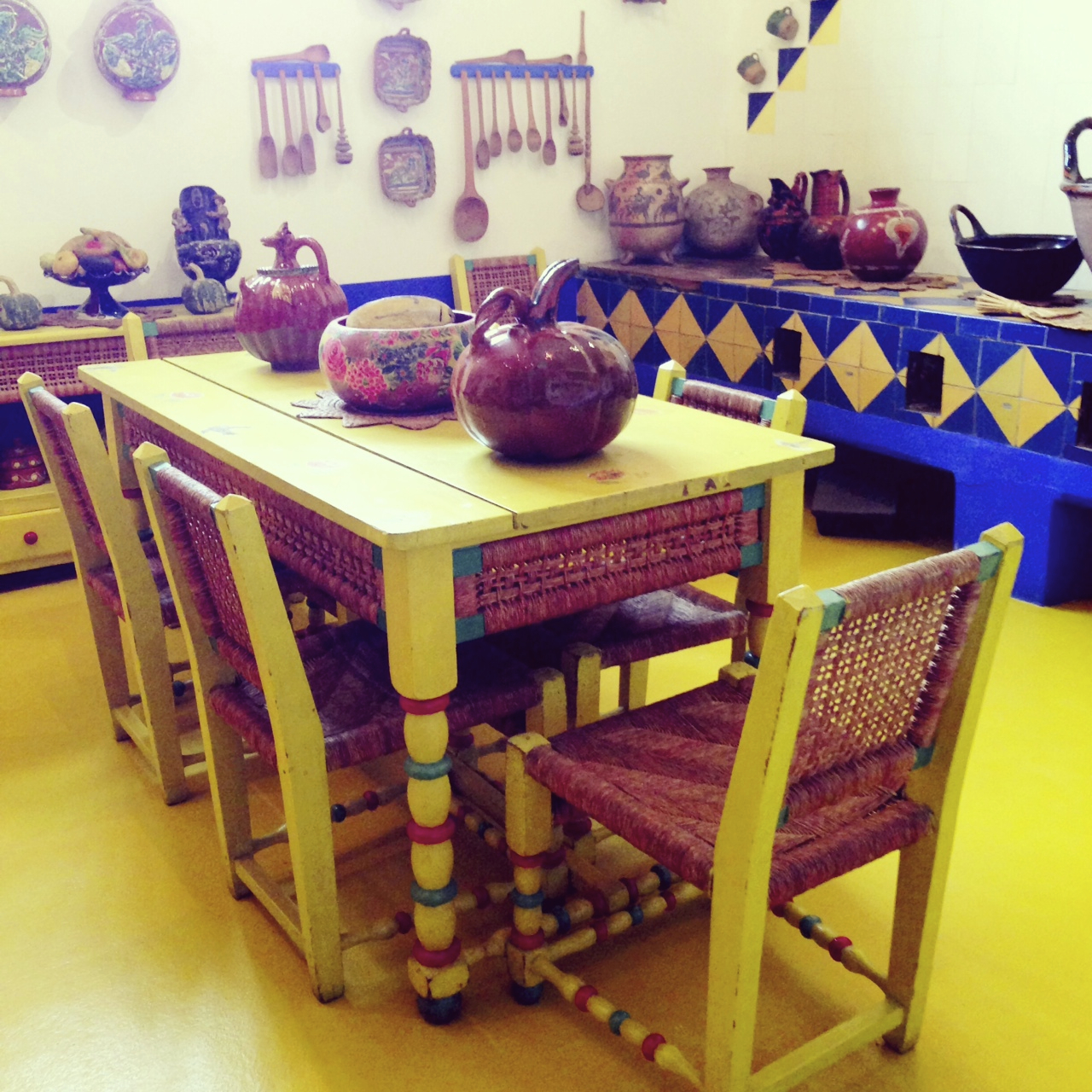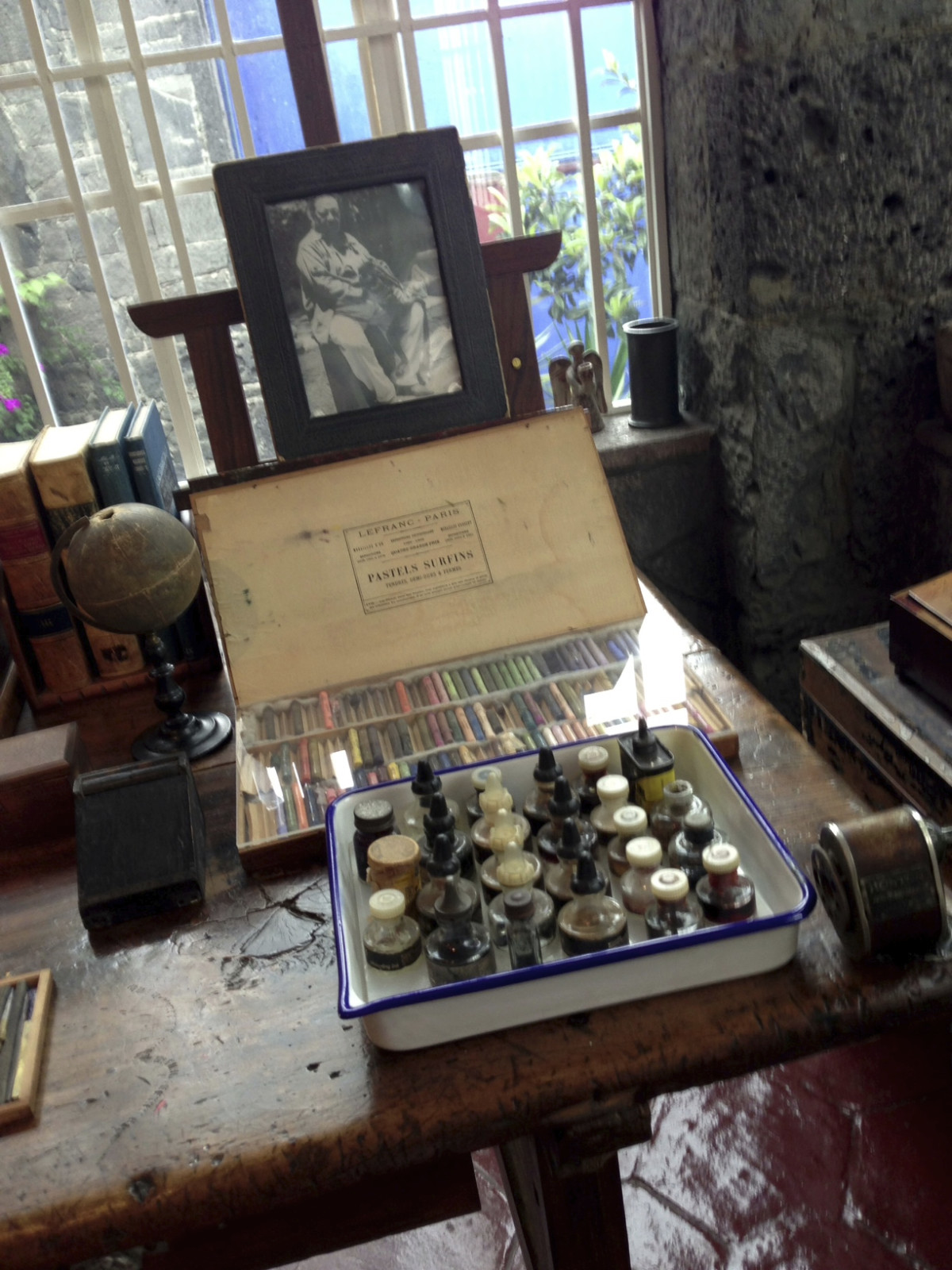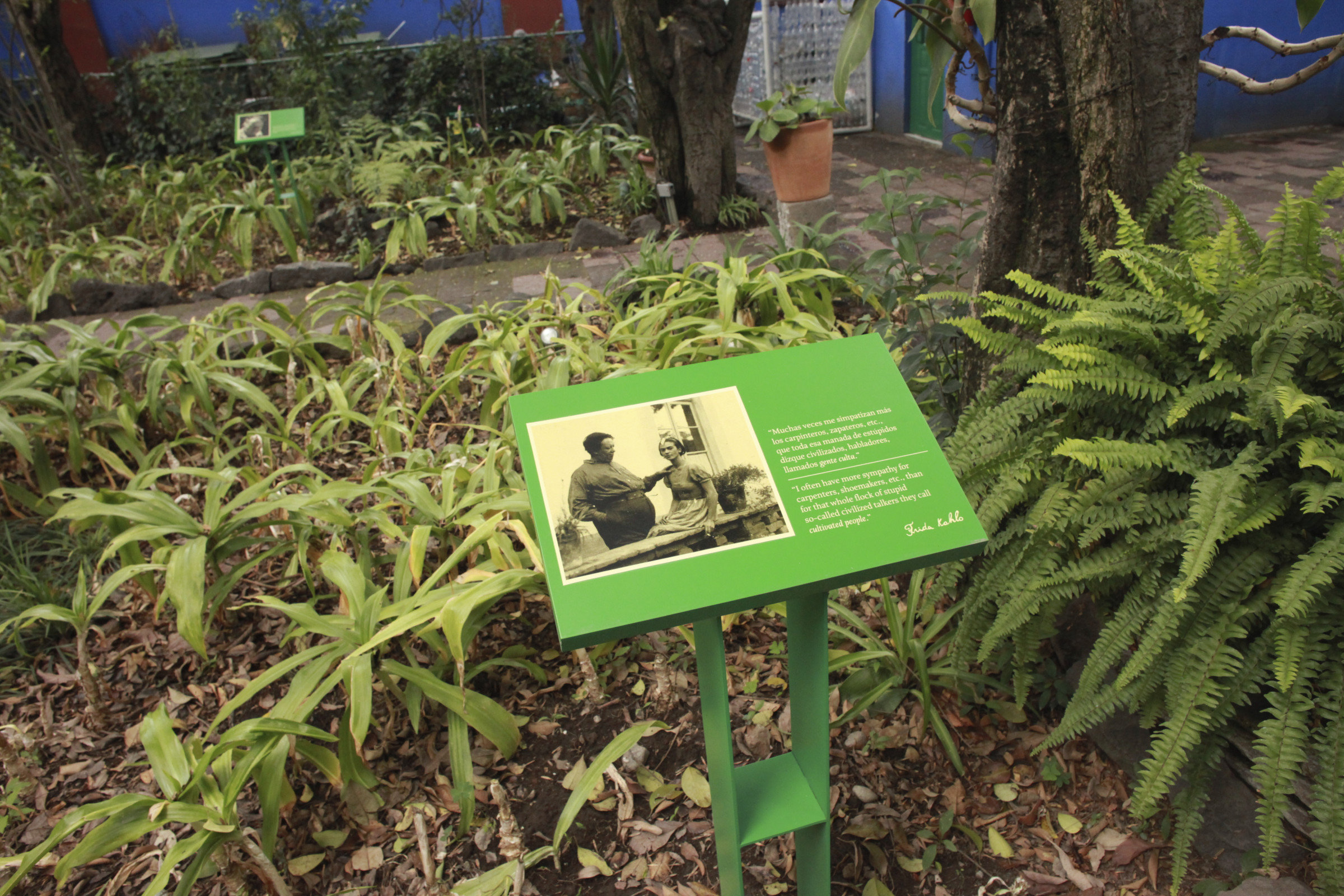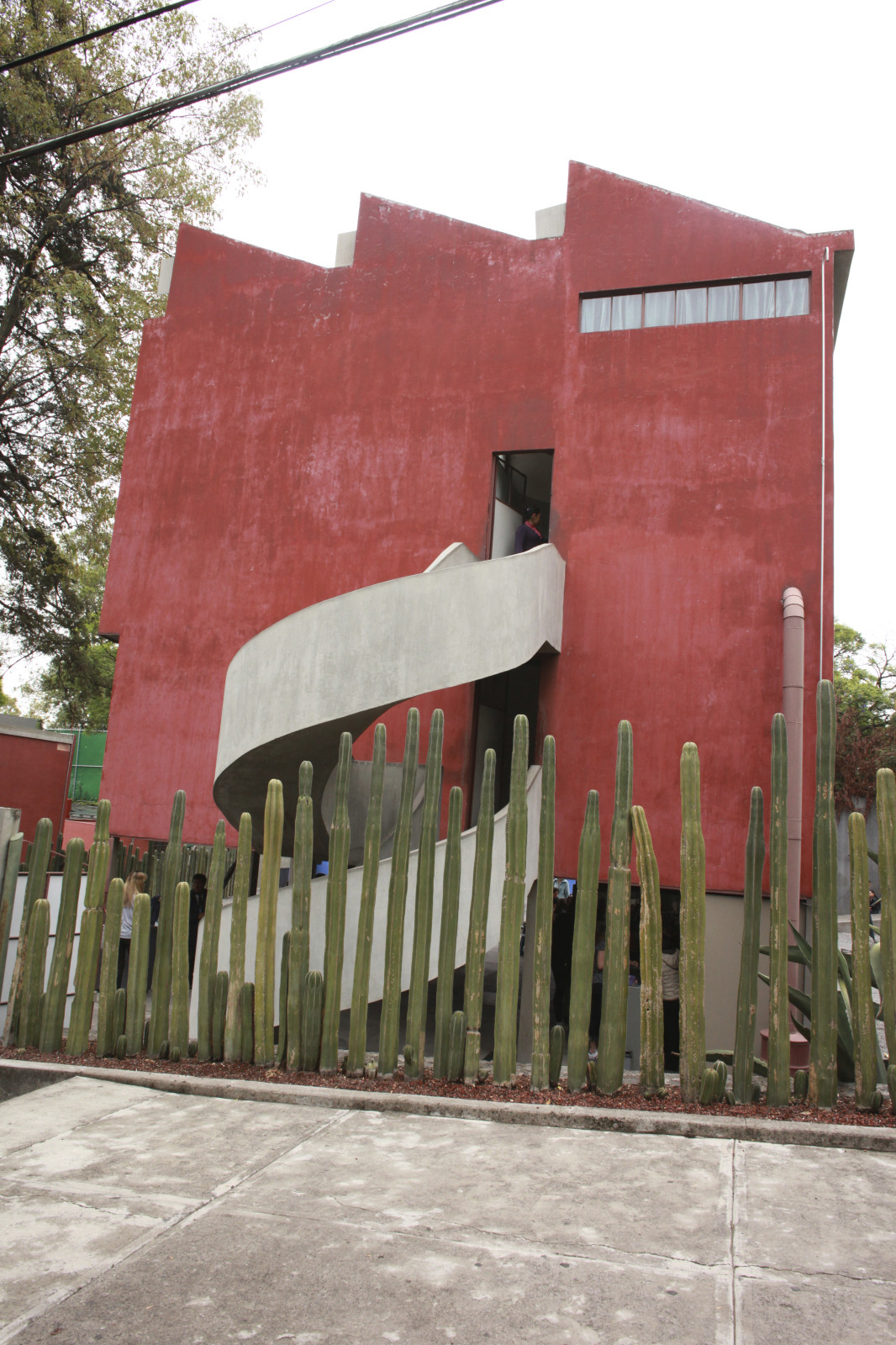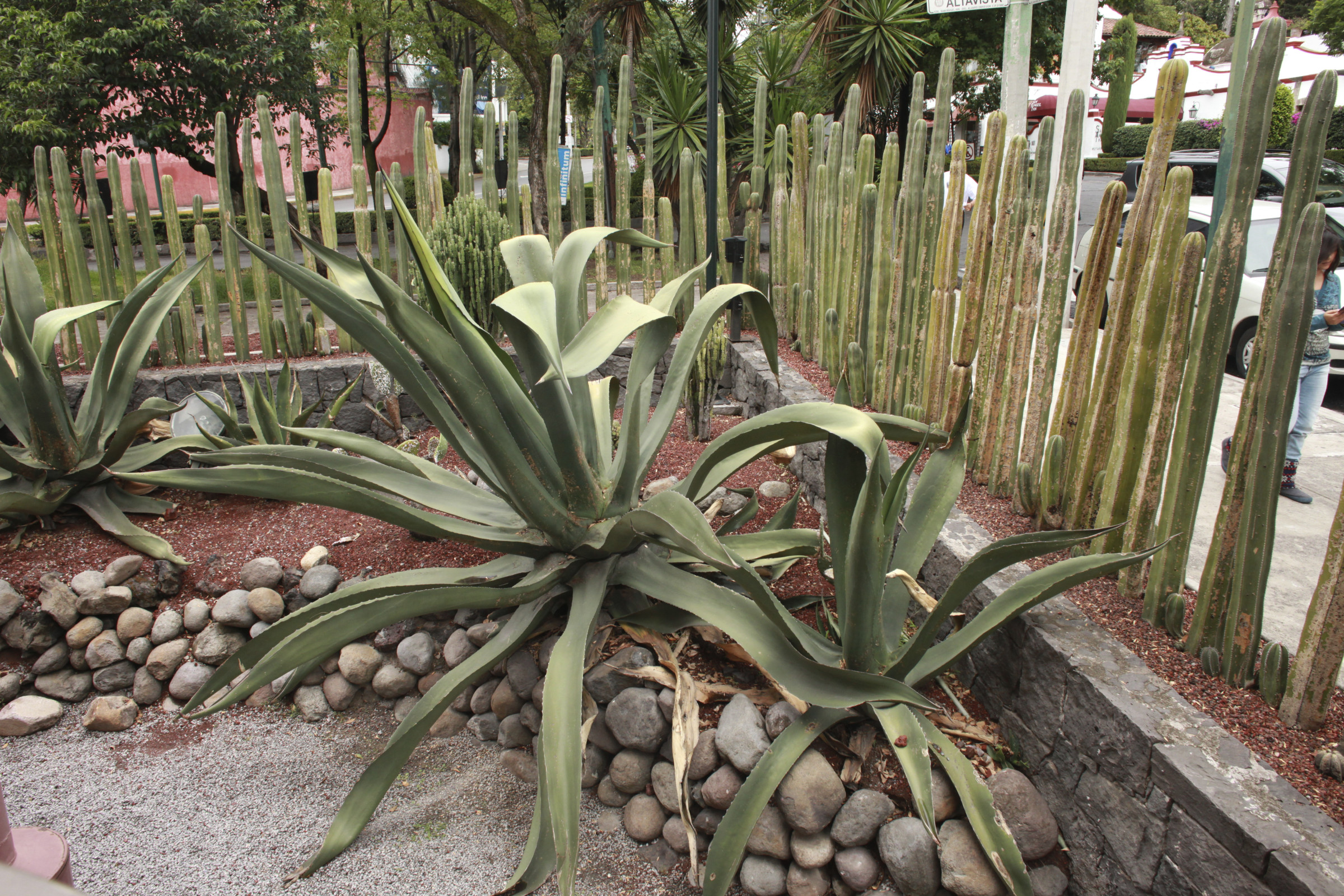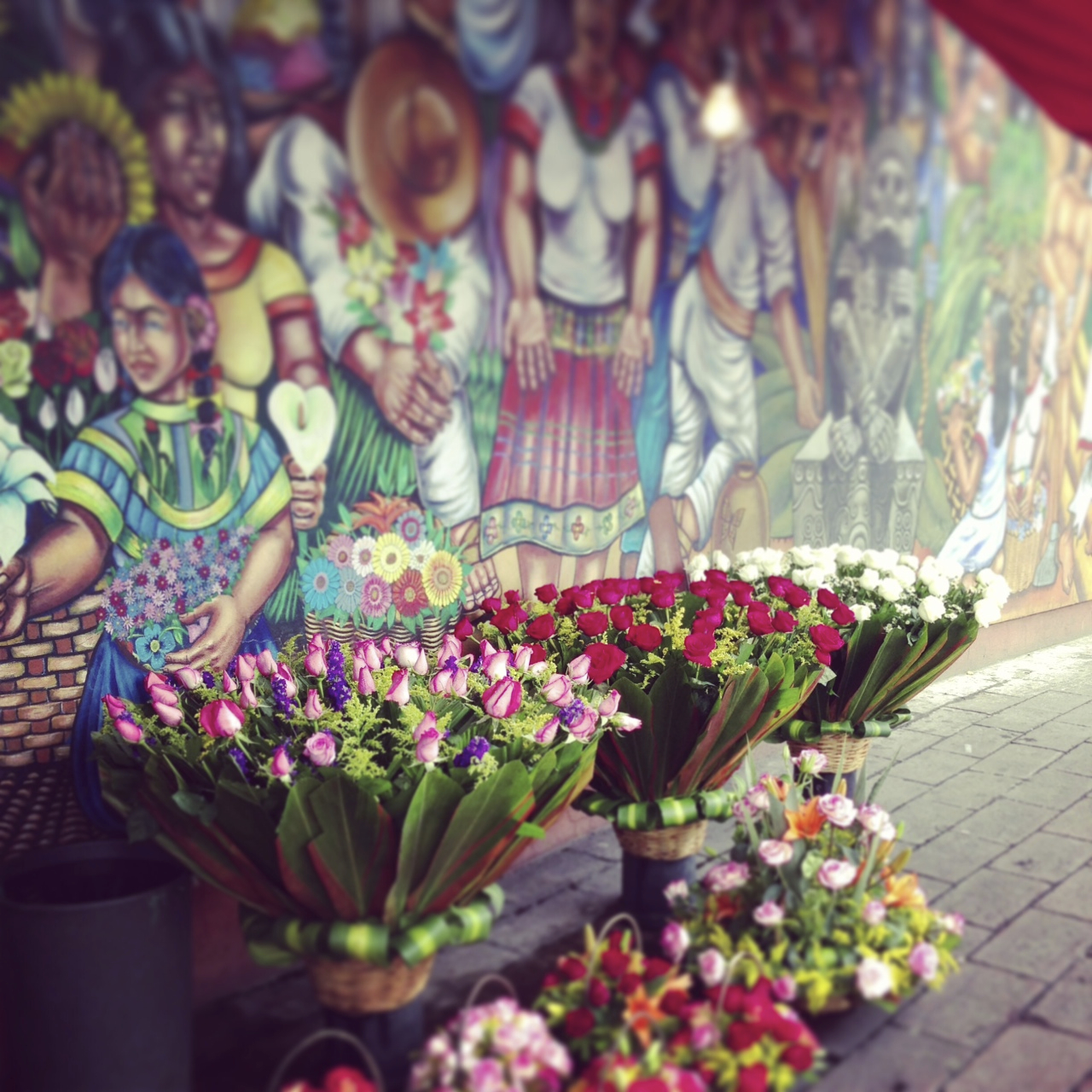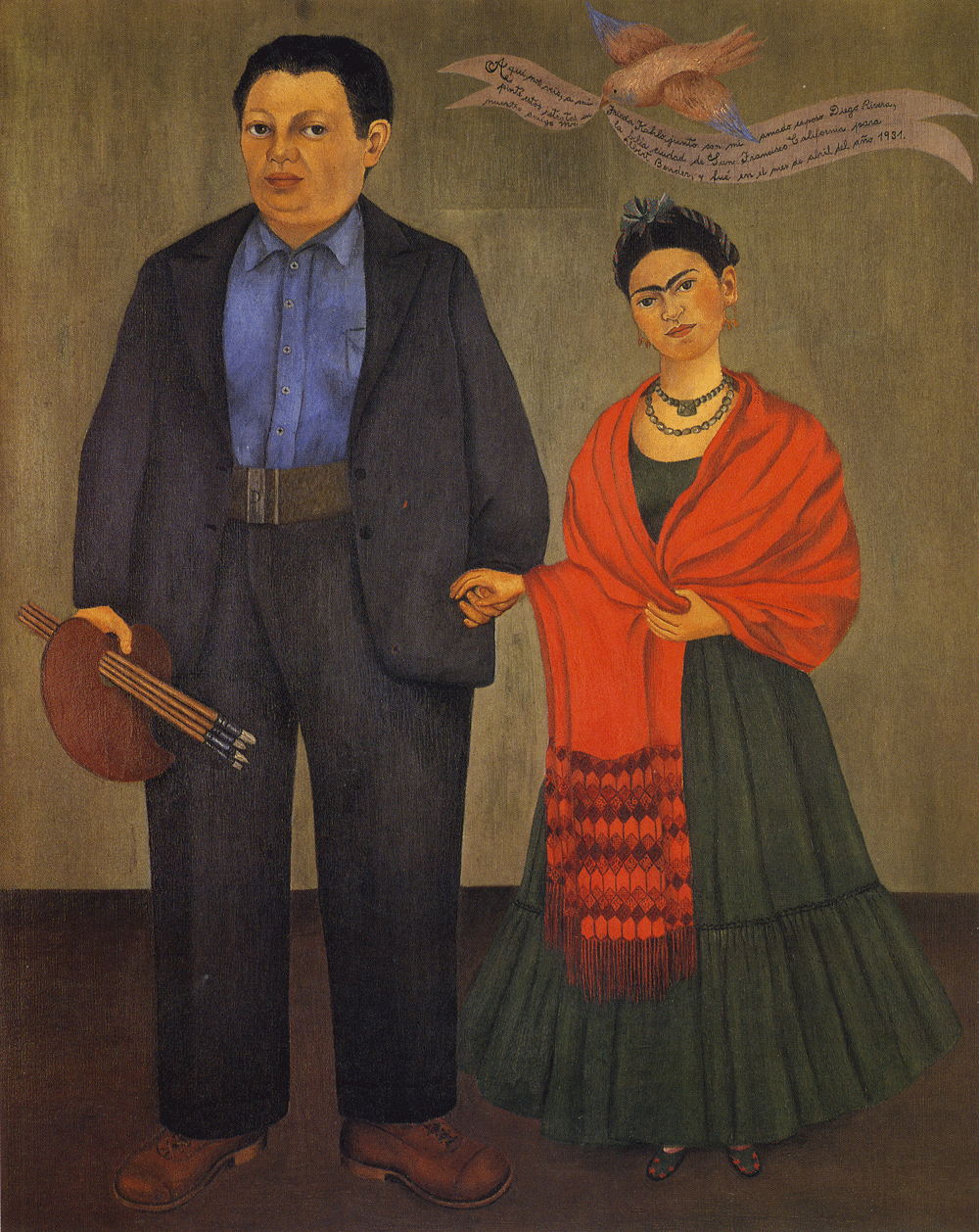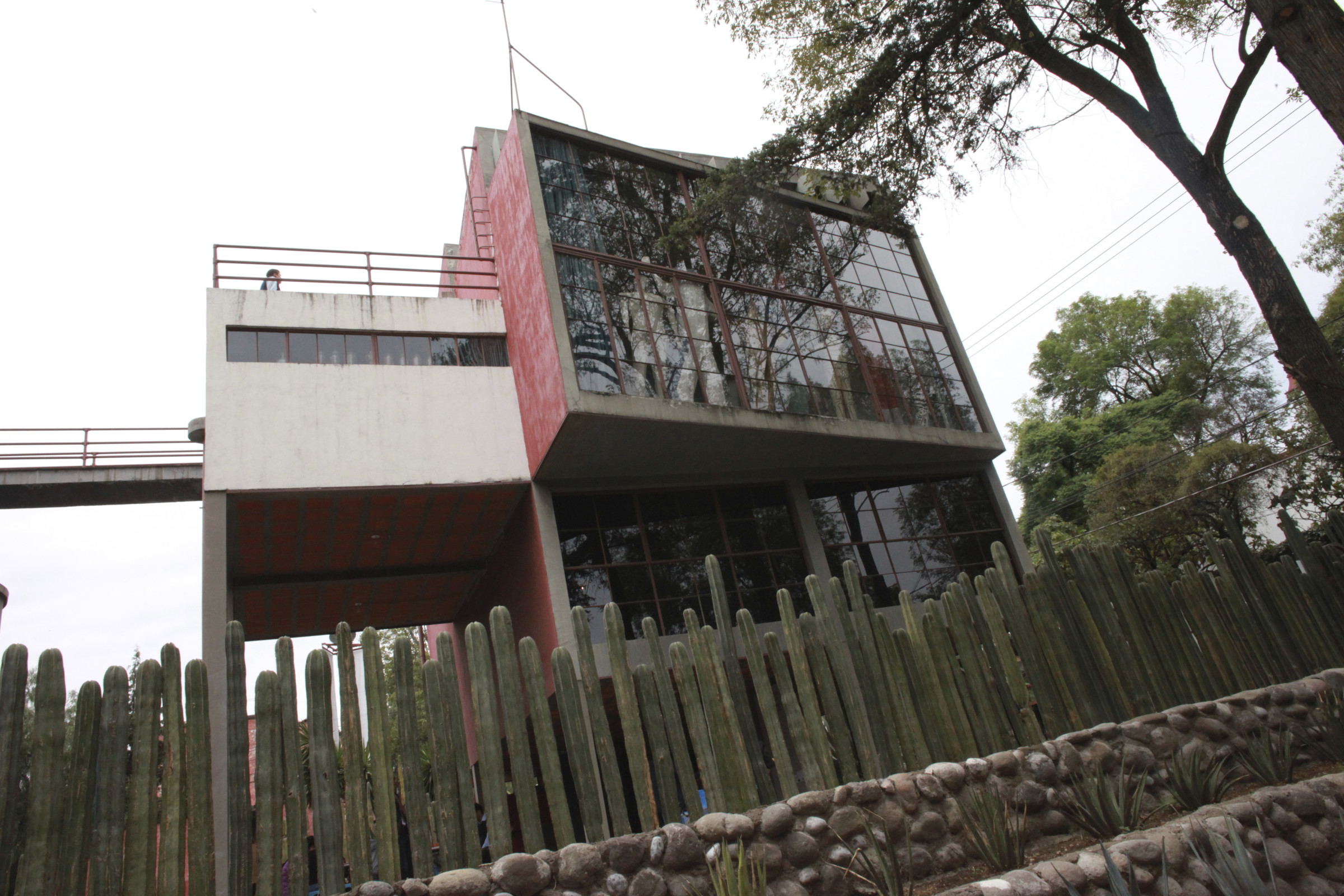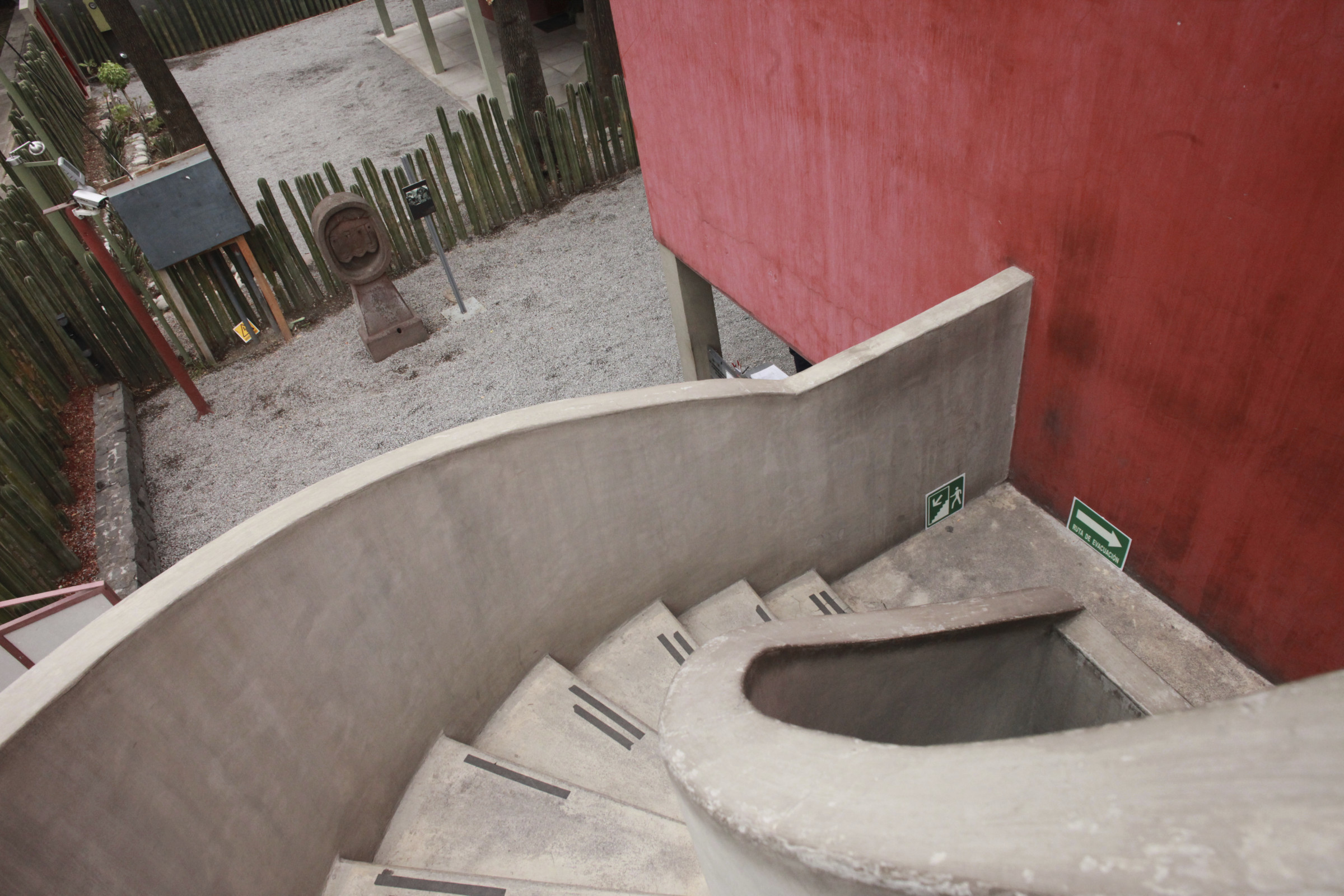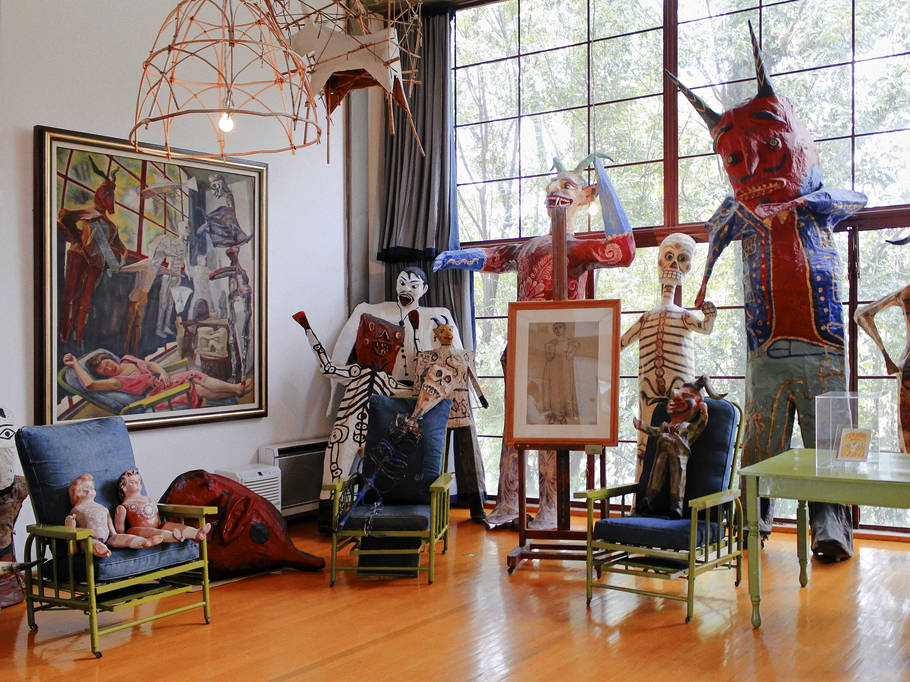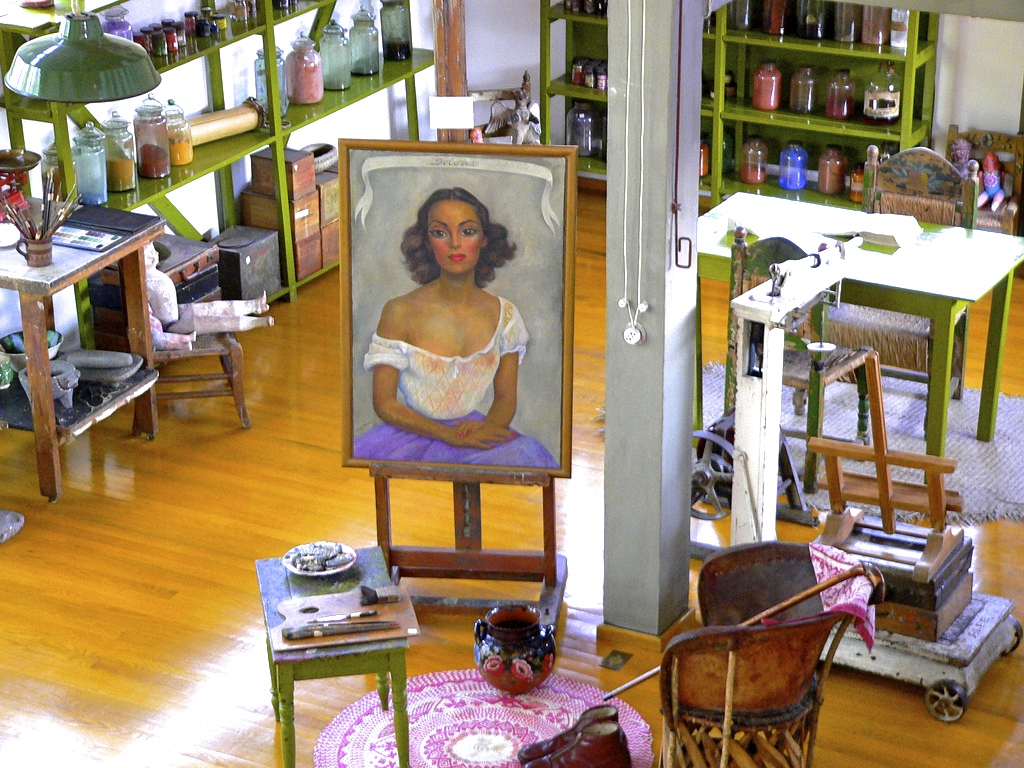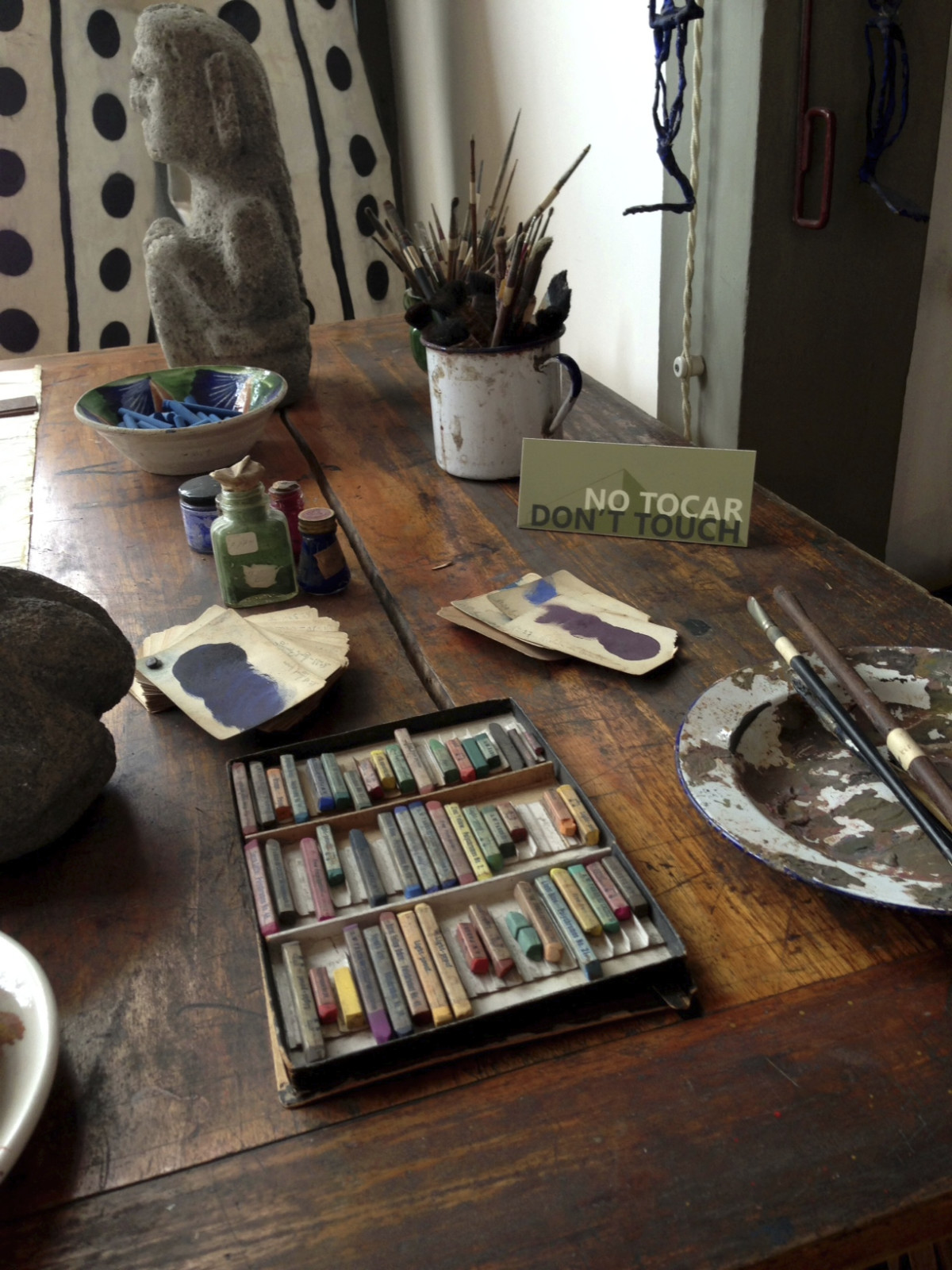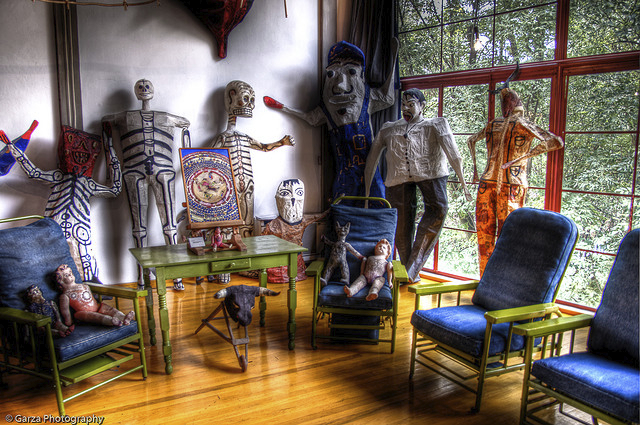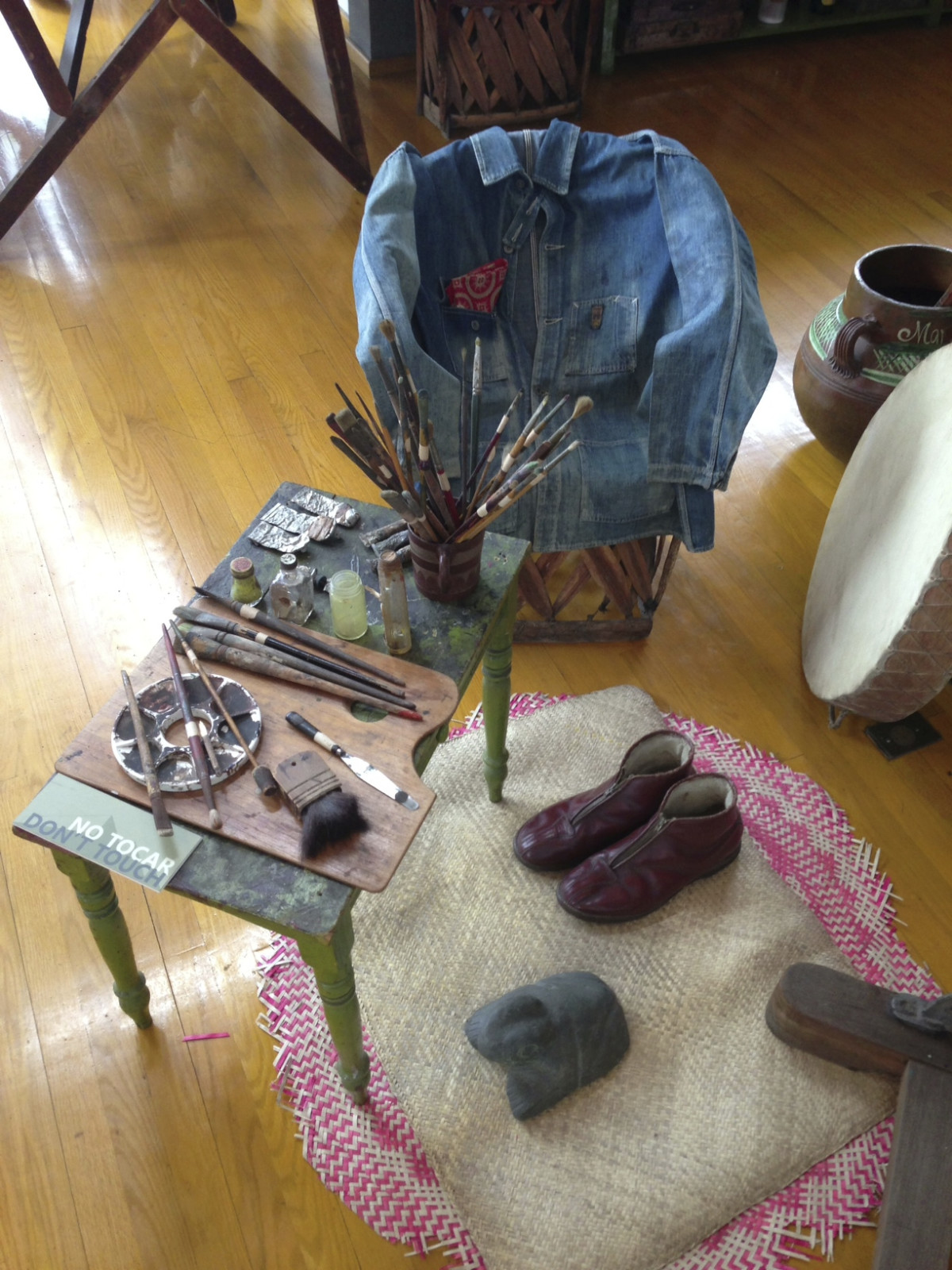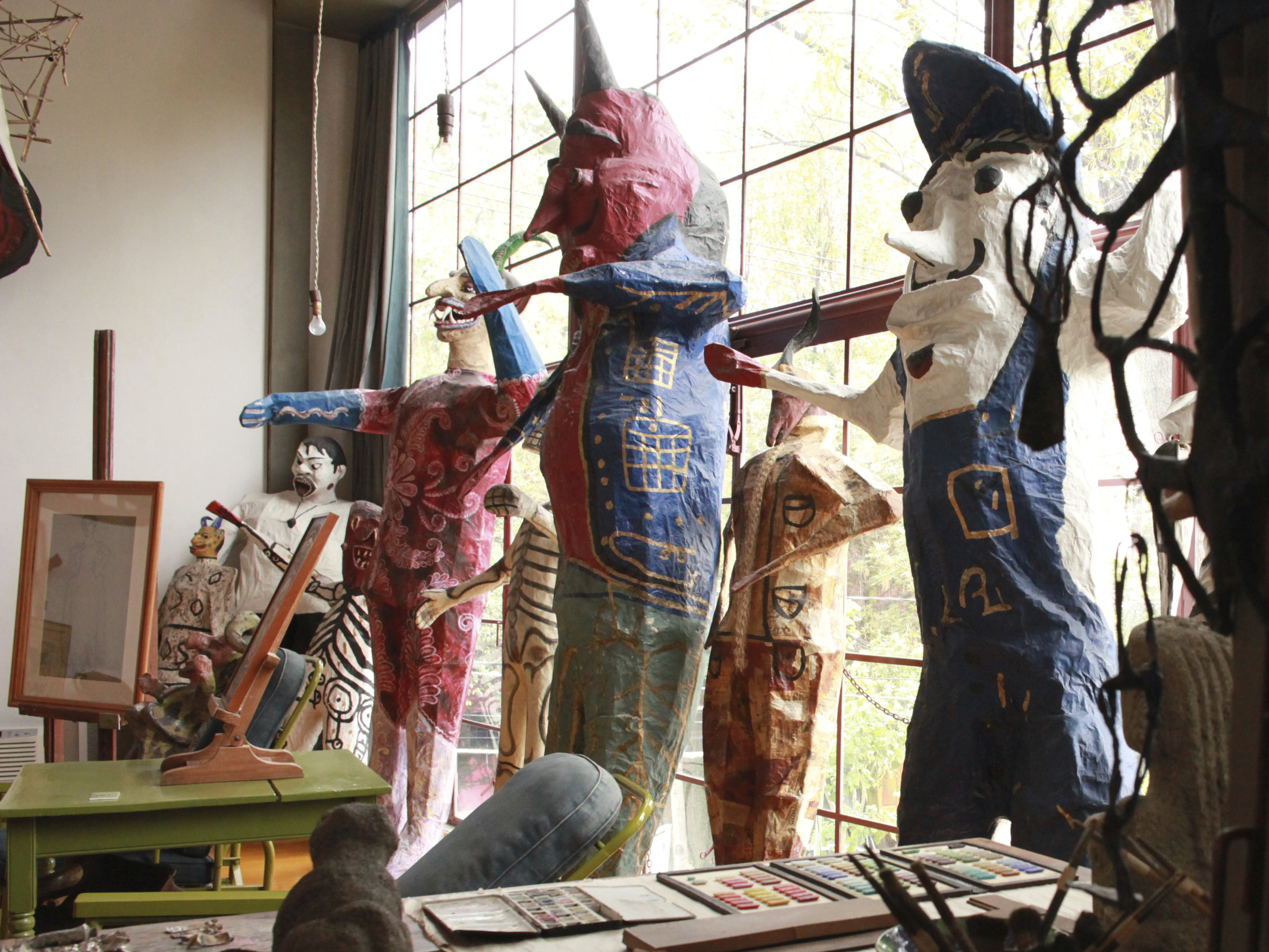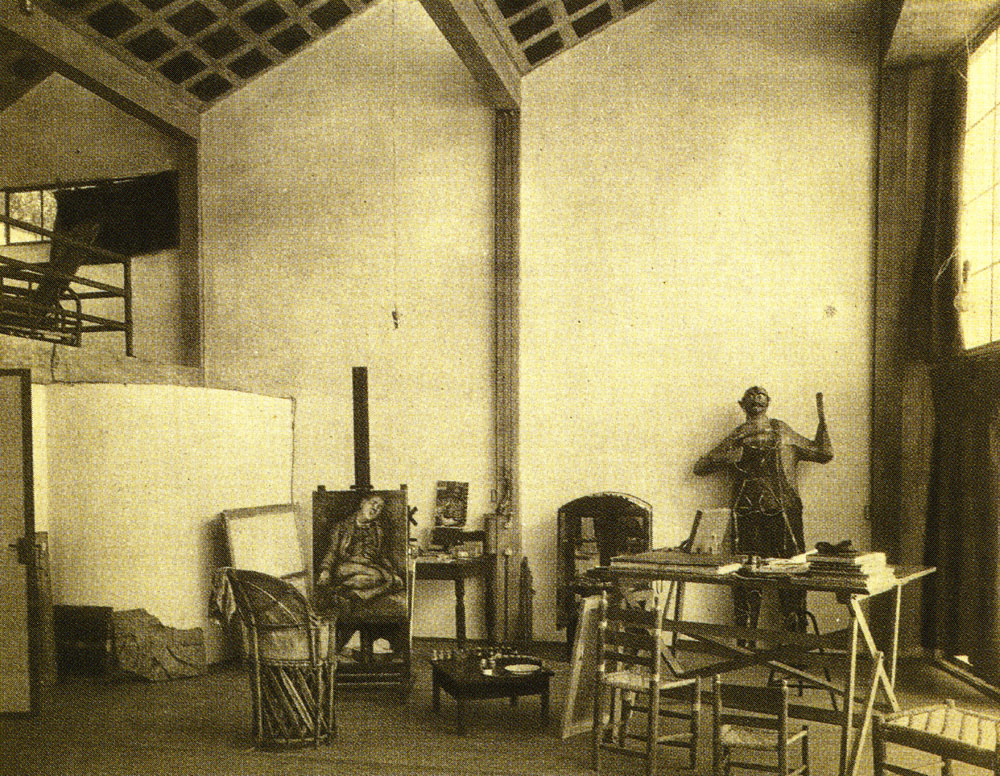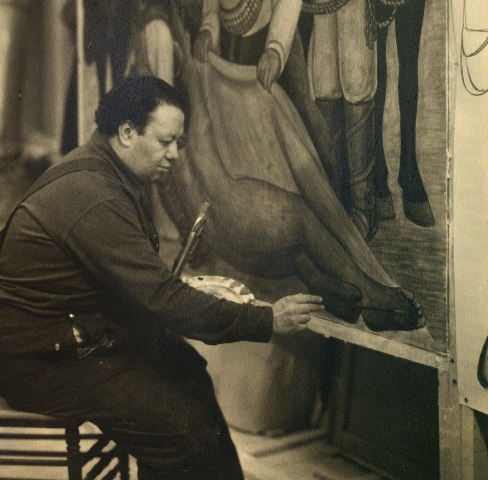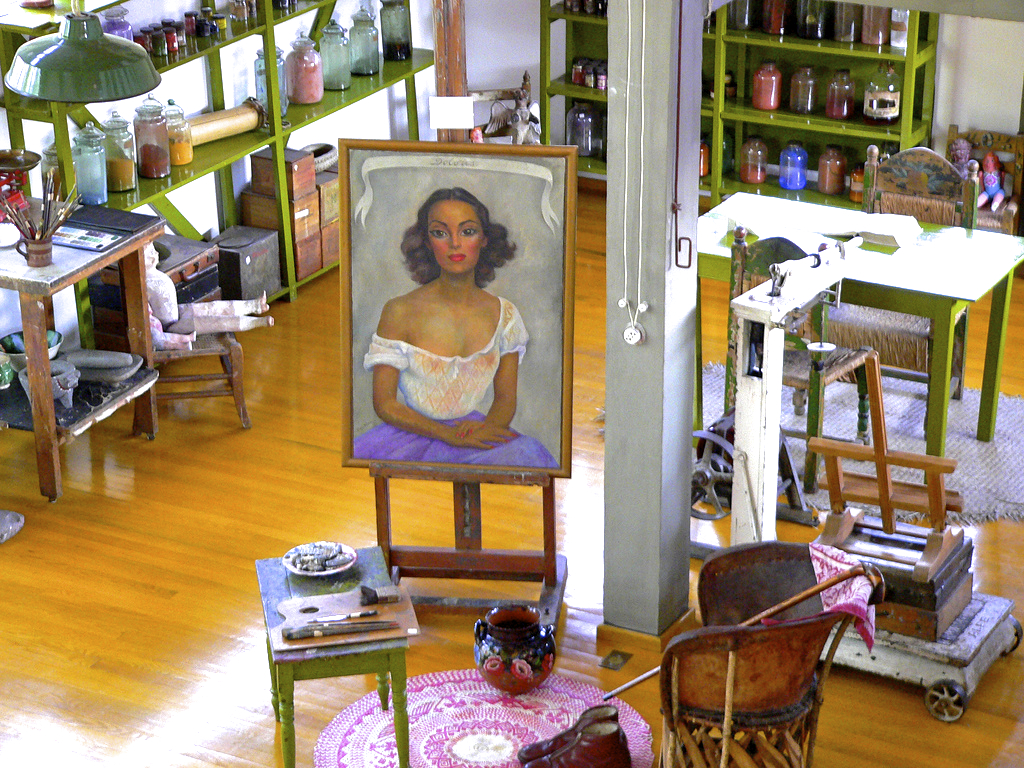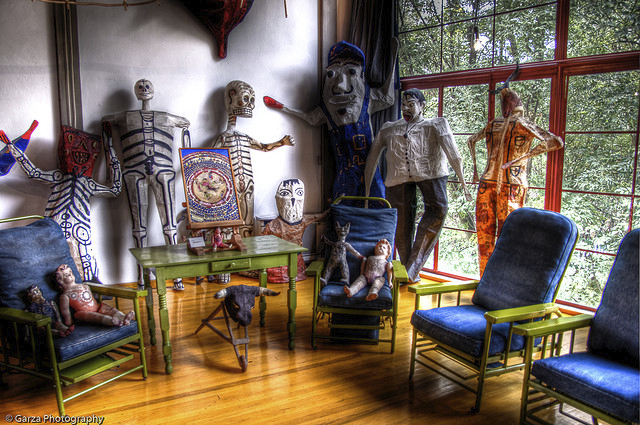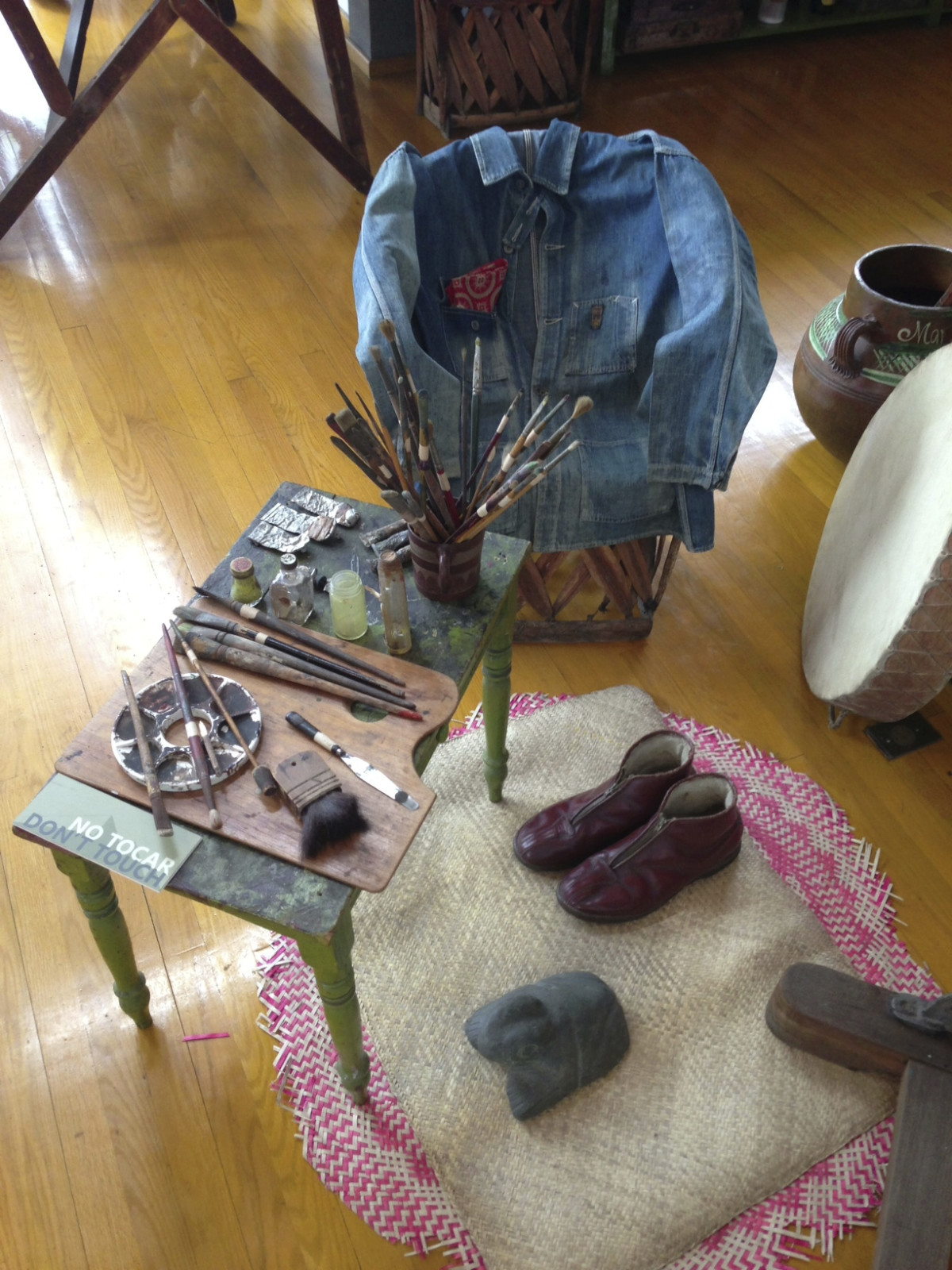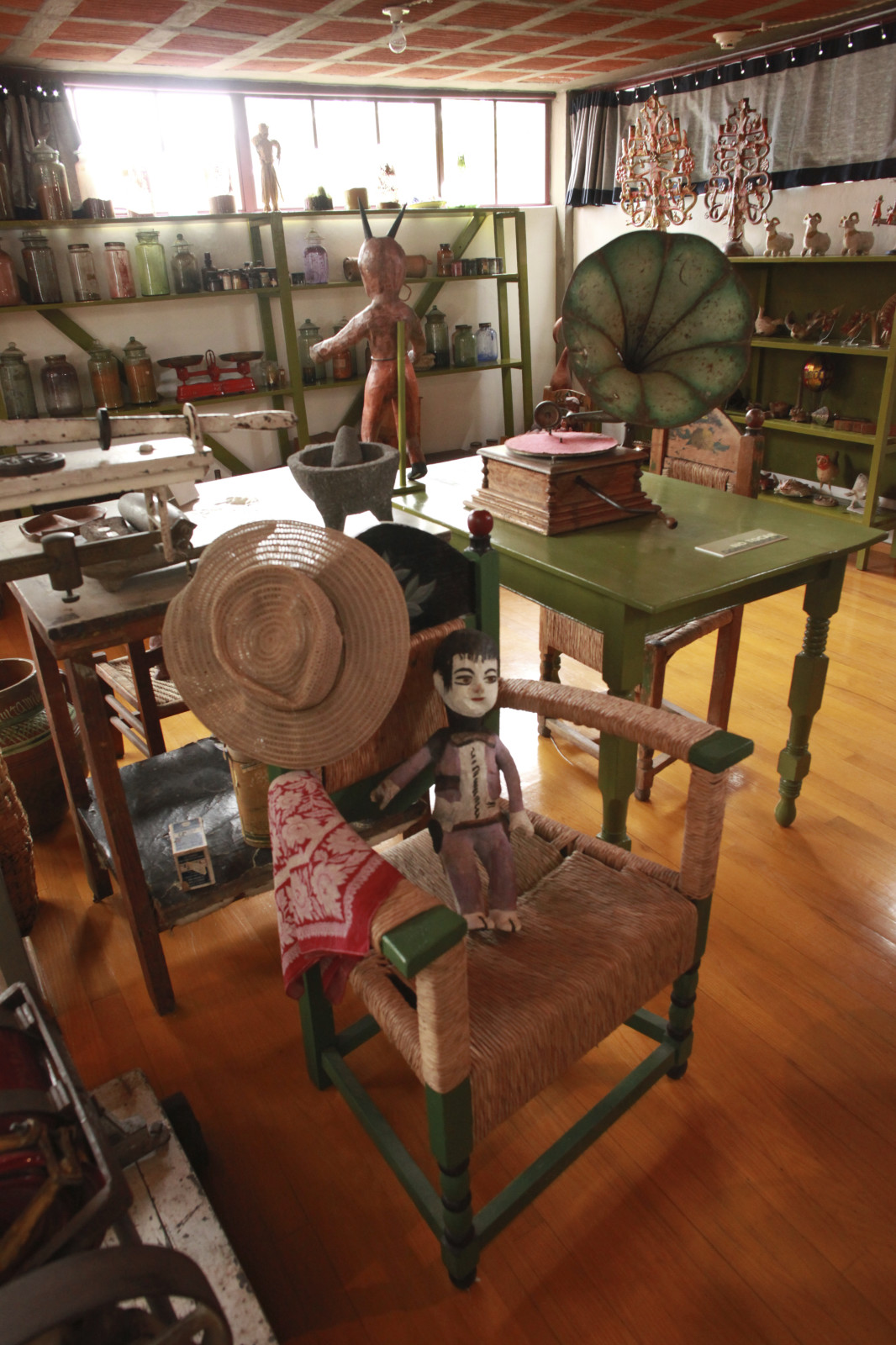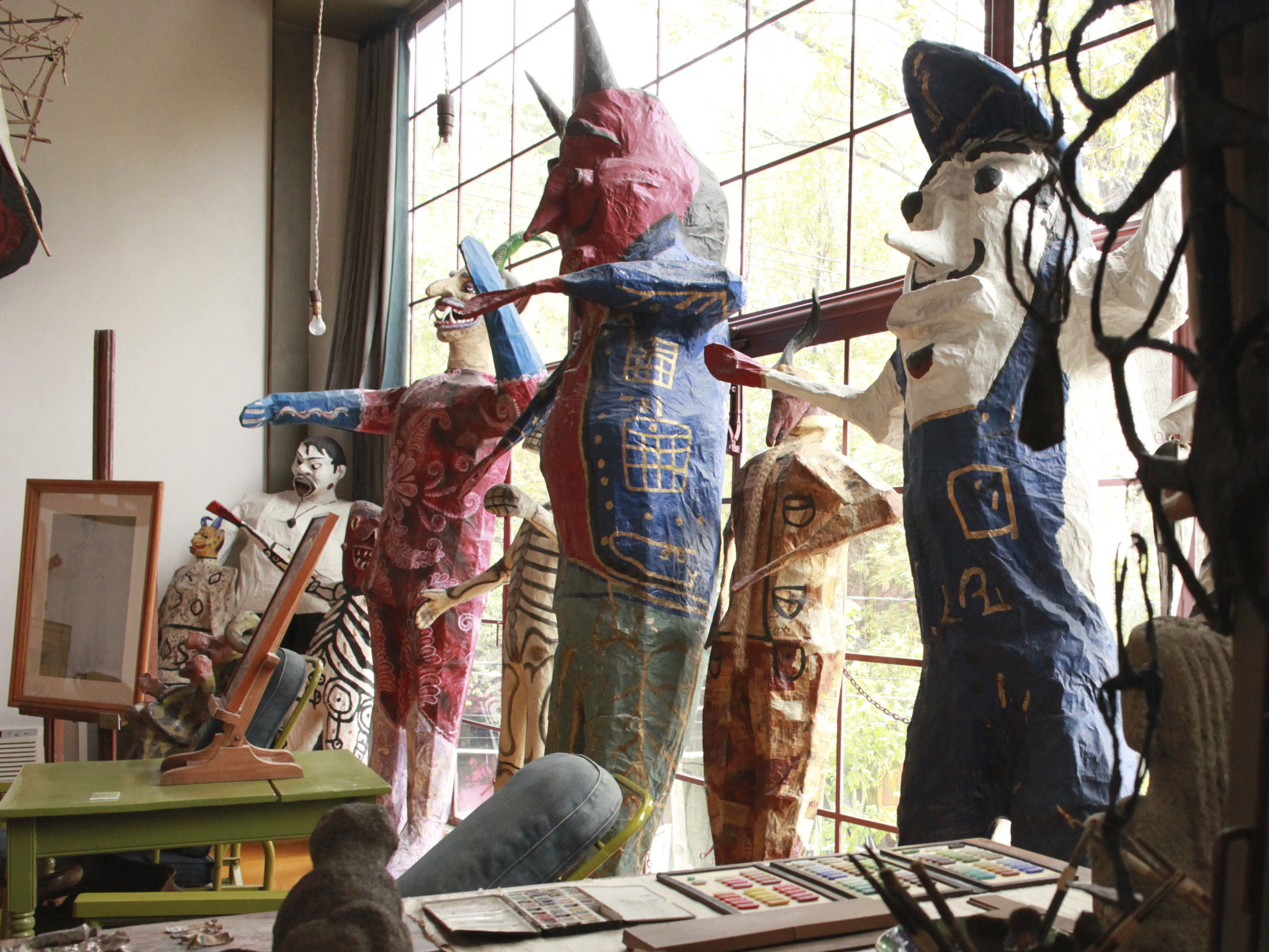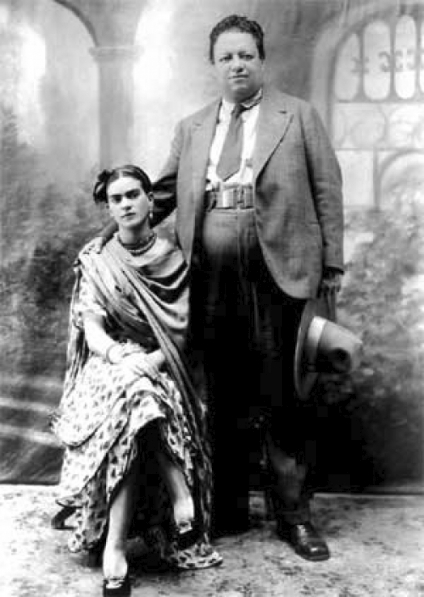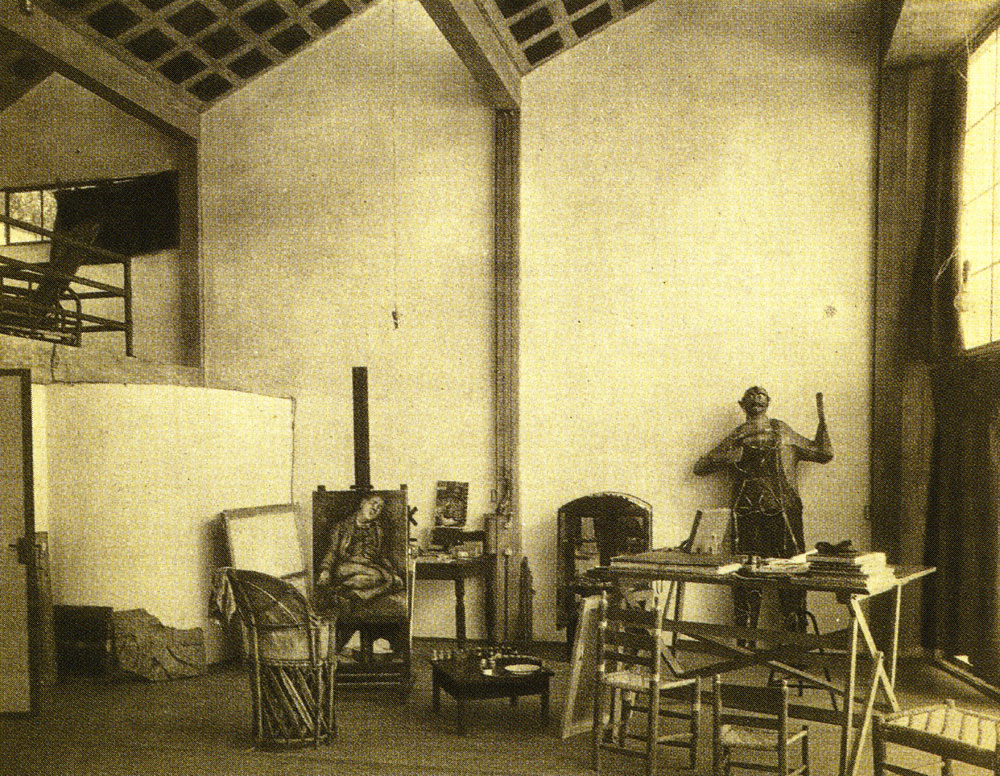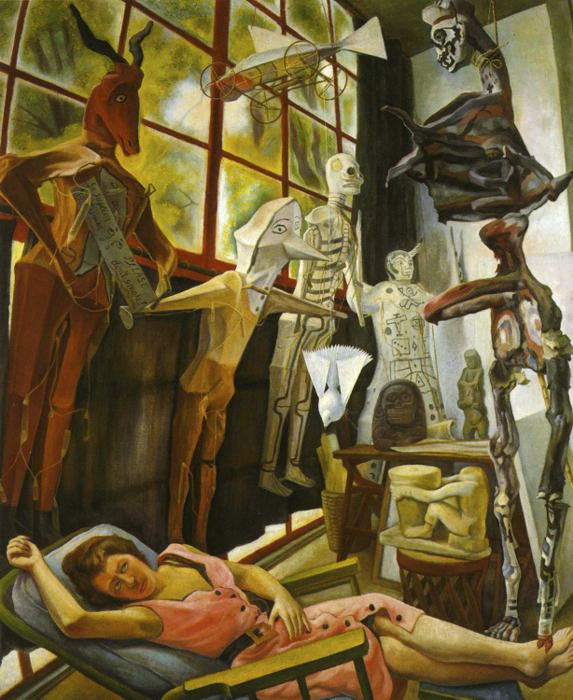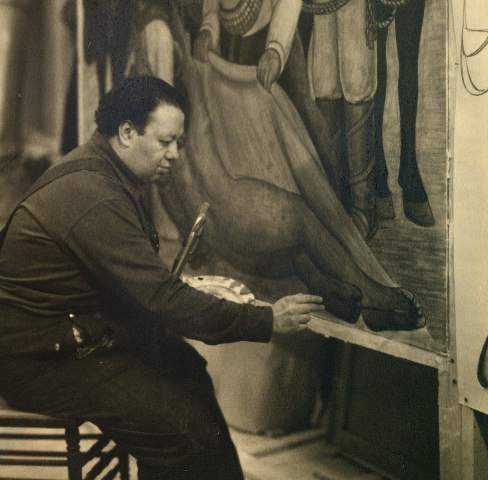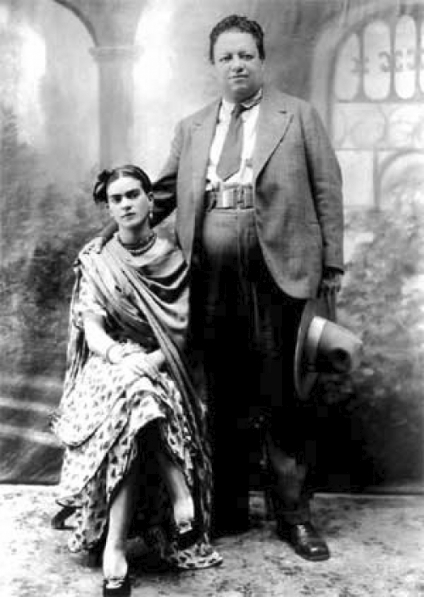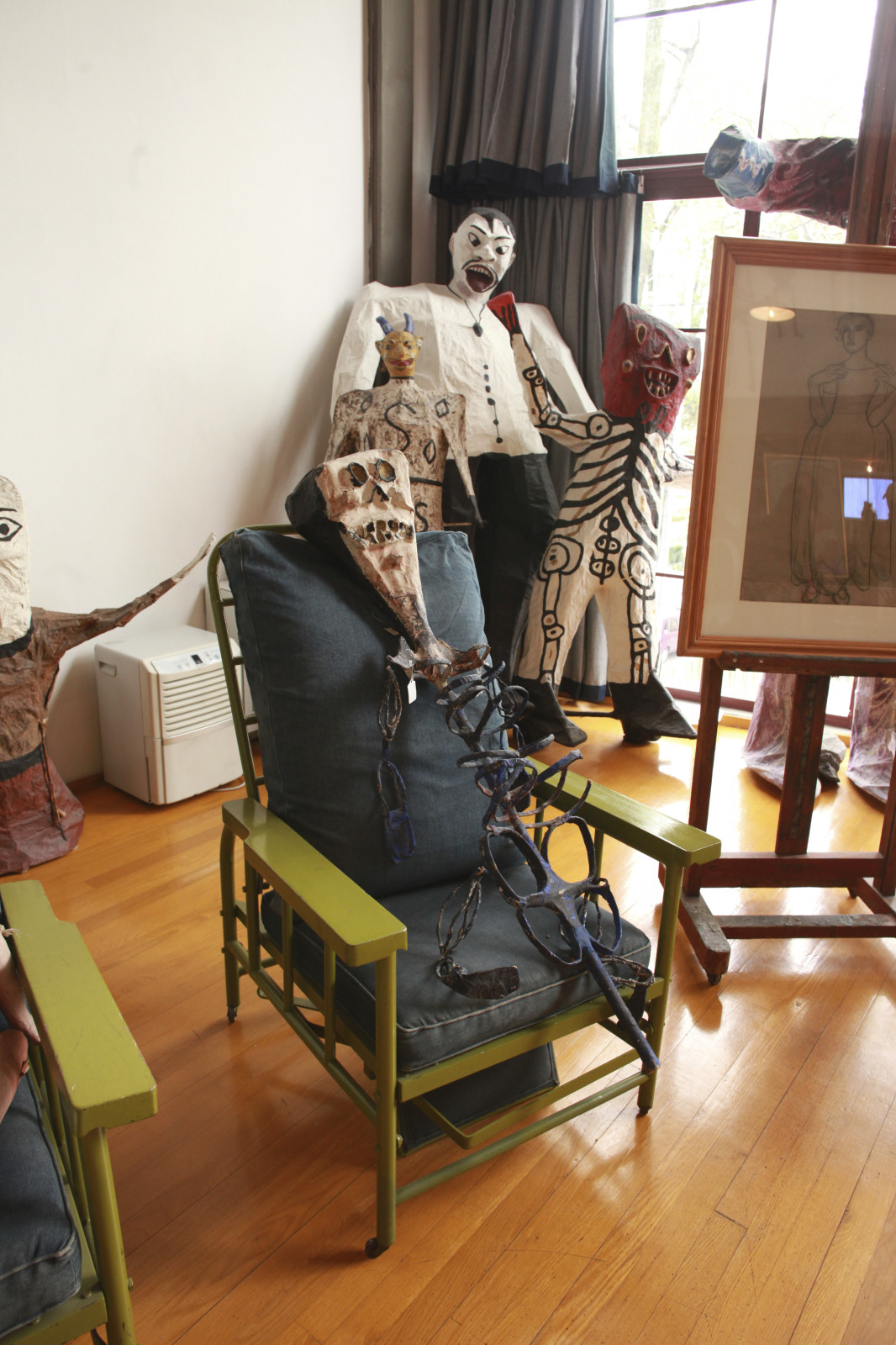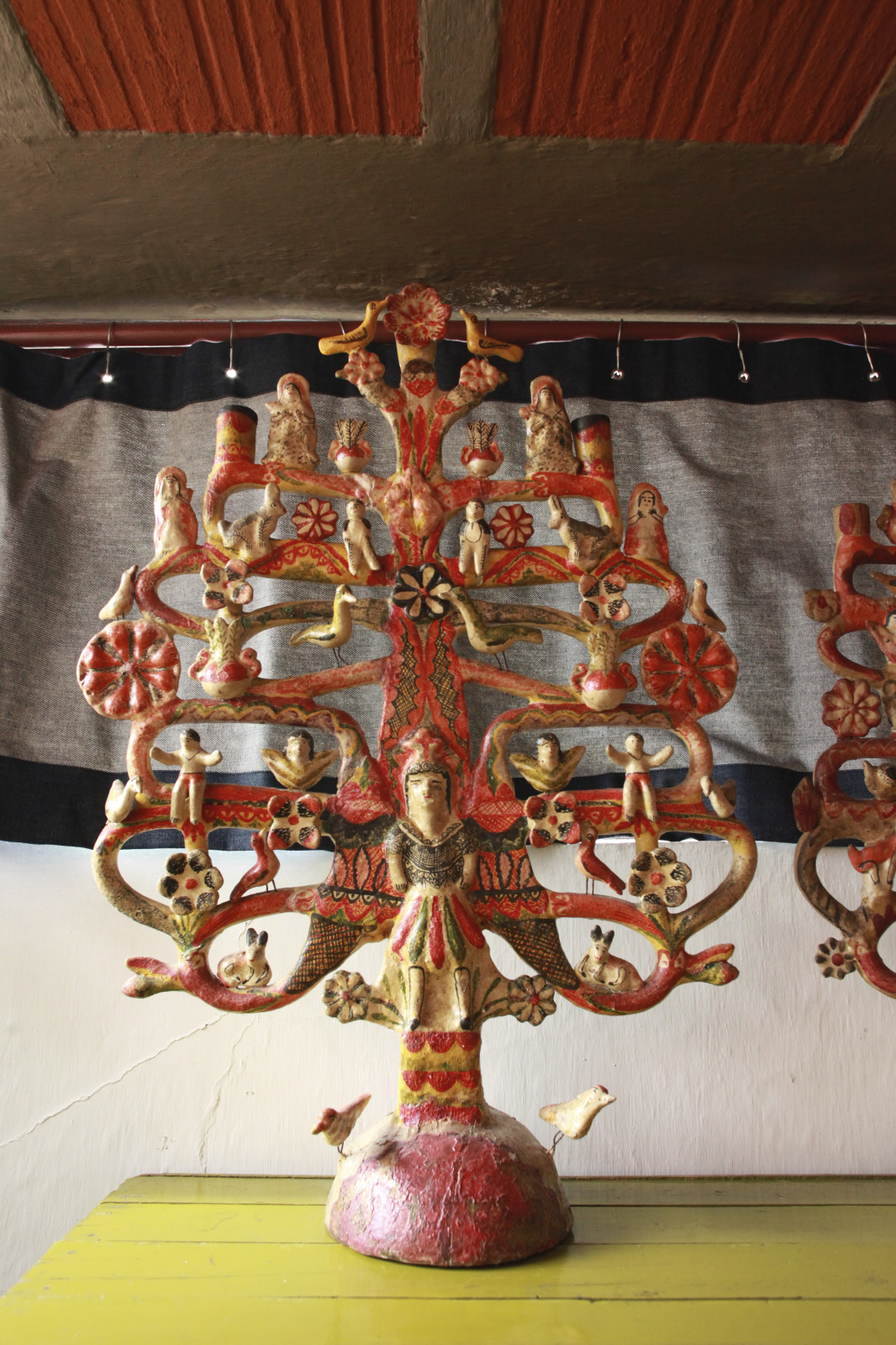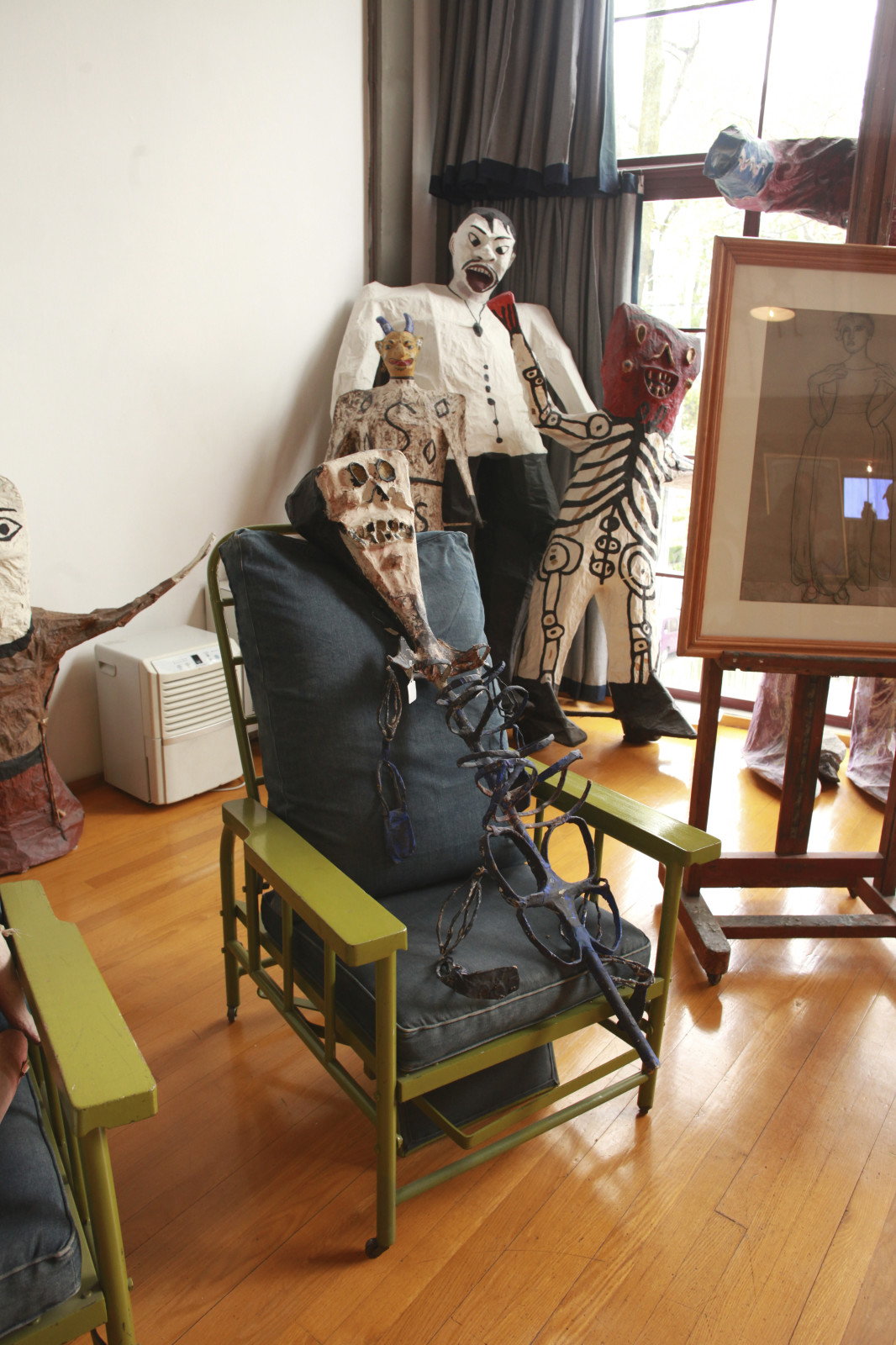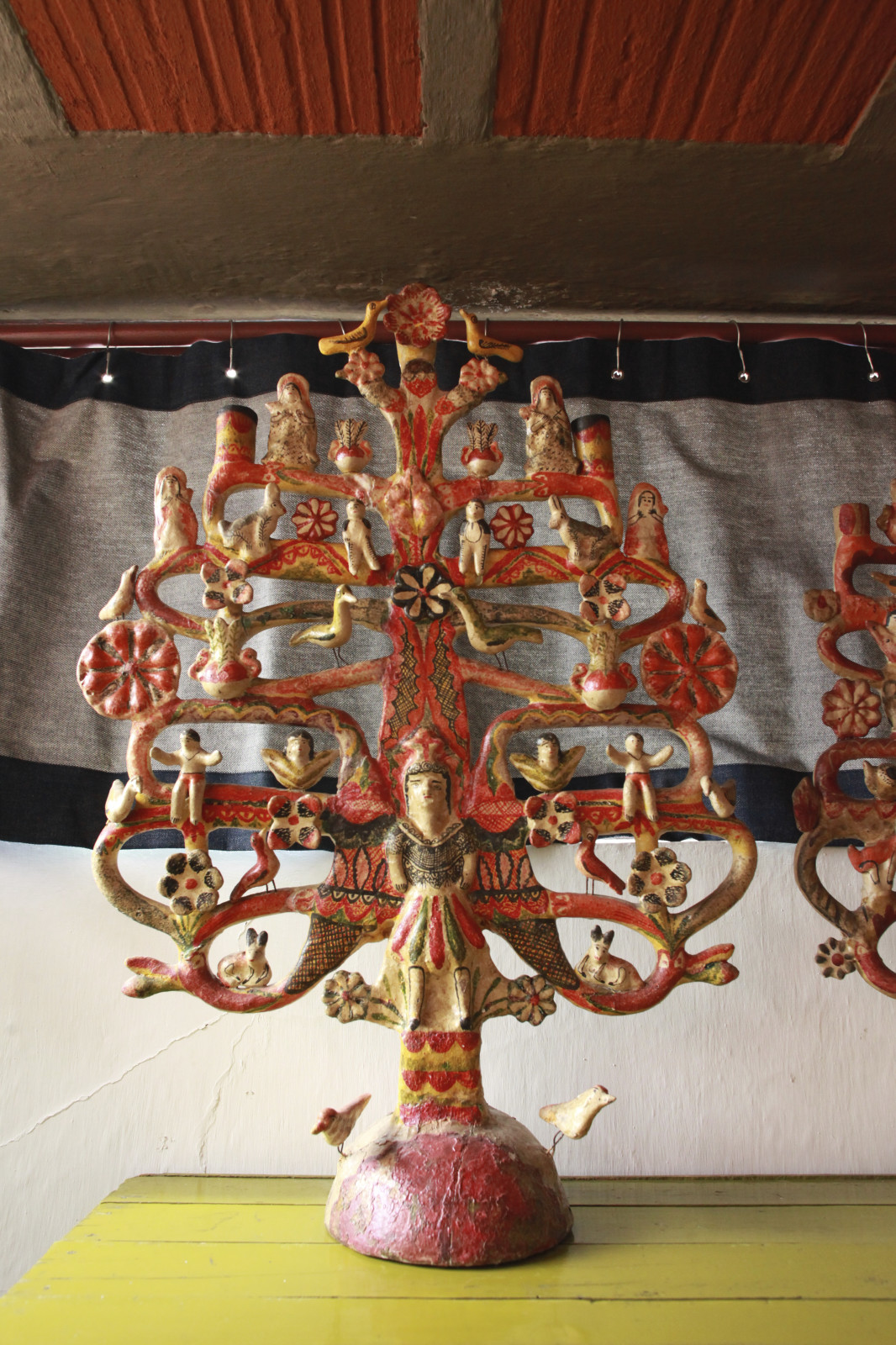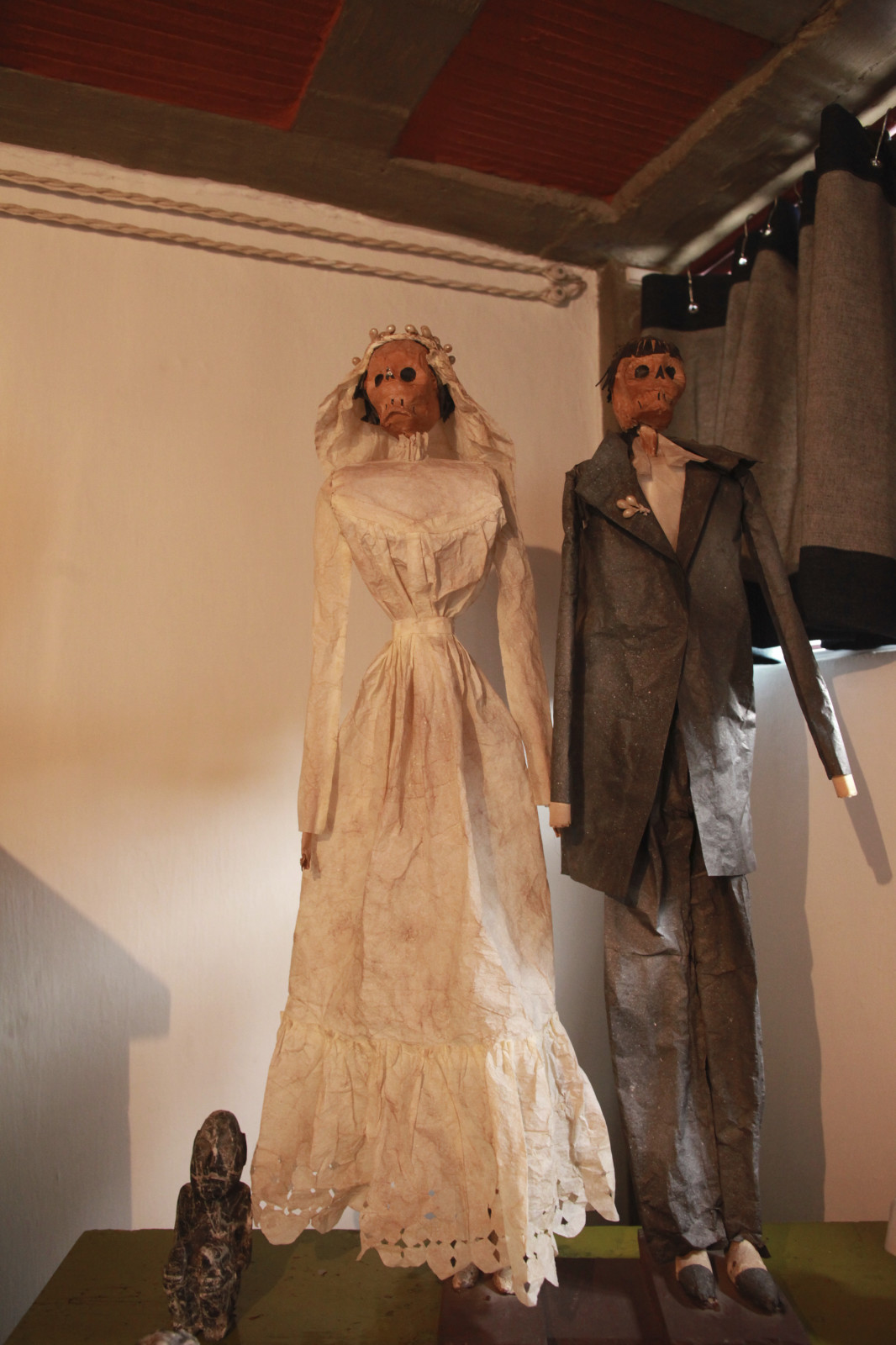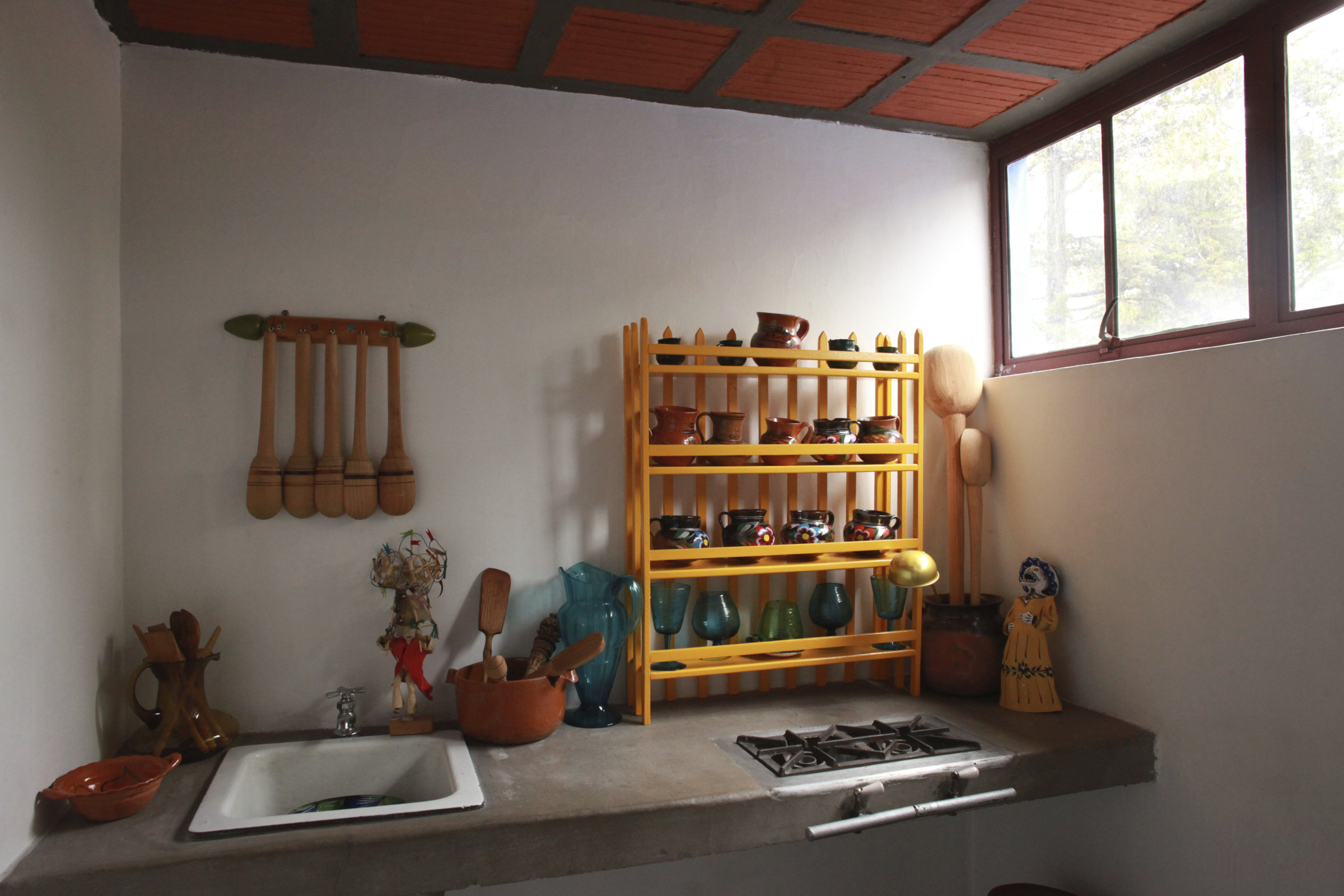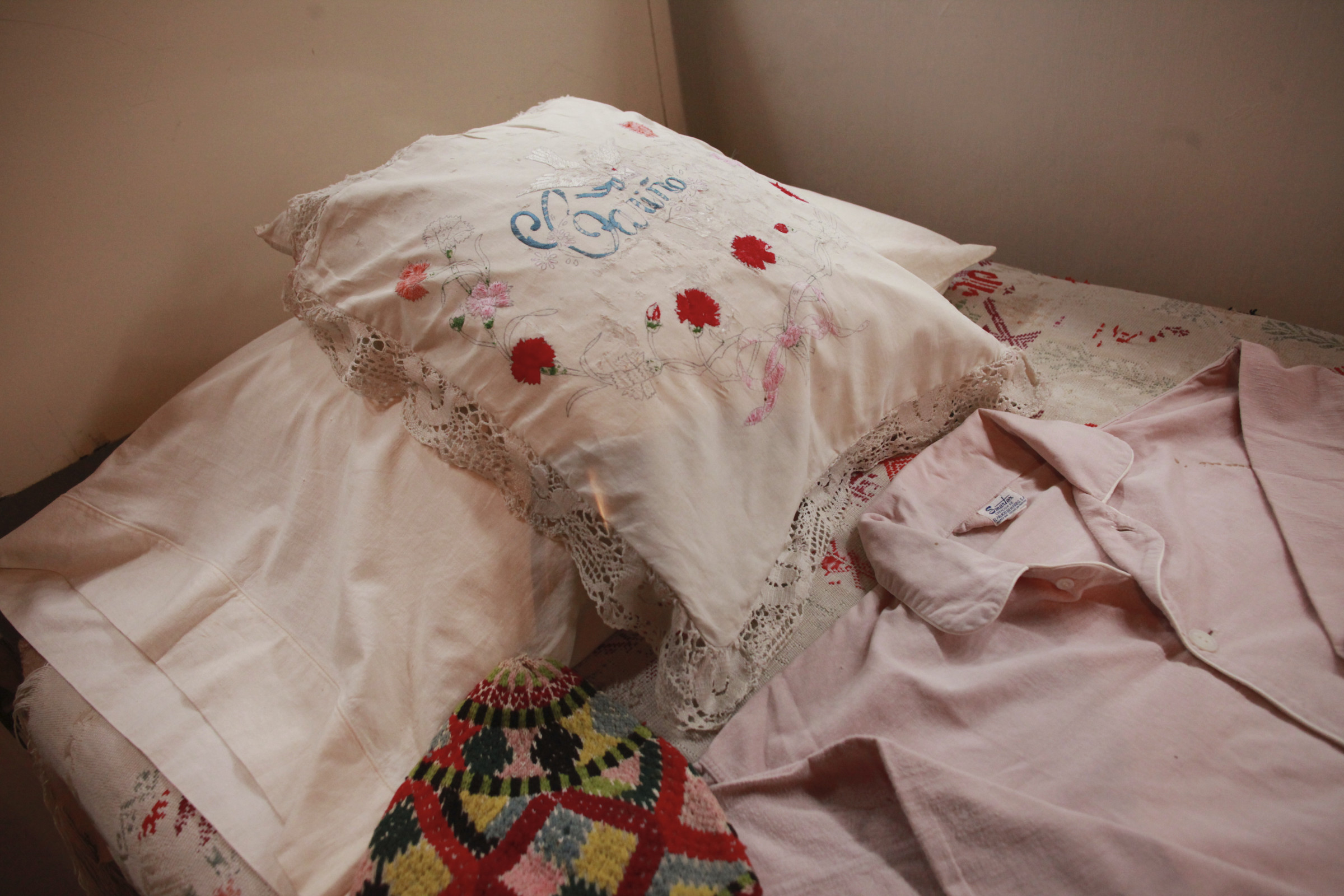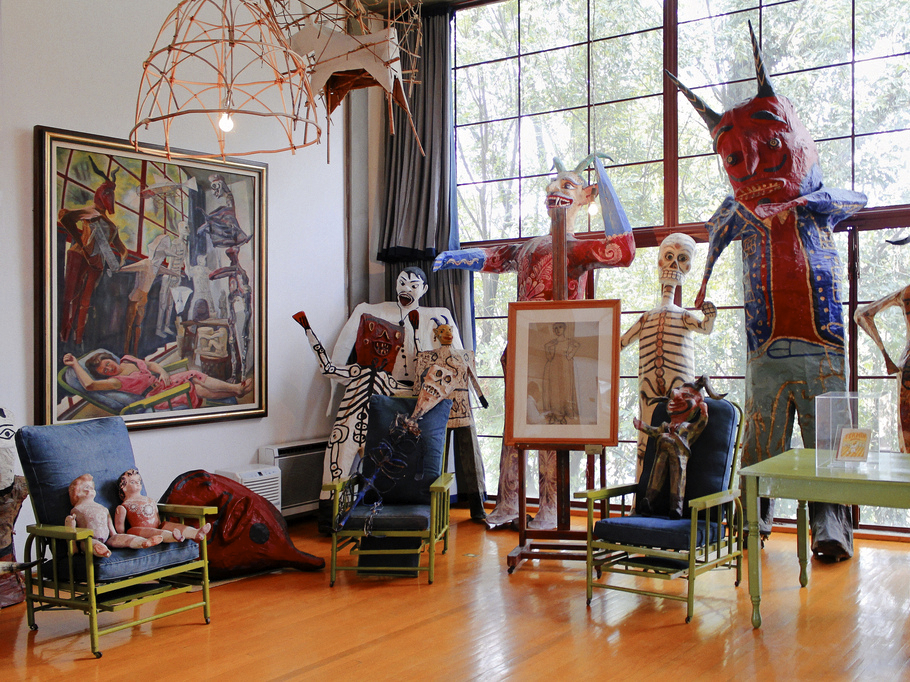South of the center of Mexico City are San Angel and Coyoacan, two cozy picturesque towns that still preserved their colonial-era charm with tree-lined cobblestone street, plazas, old churches and Spanish mansions. Many parts would definitely make you feel like you’ve time traveled to the past. A sort of Parisian bohemian Mont Martre .
San Angel and Coyoacan are also known for their weekend craft markets. The Plaza San Jacinto at San Angel offers the usual Mexican folk crafts (quality varies, some crappy some pretty good) as well as painters and sculptors displaying their works. I end up buying two little cute storybook-like paintings from a painter. There are several handicraft markets at Coyoacan as well, I got some pretty nice lacquered gourd boxes for a good price.
Walking around Coyoacan is a nice afternoon itinerary as charming cafes, restaurants, cantinas, boutiques and interesting people (i.e. artists, musician, hippies, hipsters, bohemians…etc) are part of the local attractions. A perfect neighbourhood to hang out. Recommended are El Jarocho, an old time family owned coffee shop that’s famous for amazing good and cheap coffee. It’s so popular that people line up in long queue on the street. Coyoacan also known for many good ice-cream shops.
This charming bright blue house at Coyoacan is where Frida Kahlo was born and then shared with her husband Diego Riverat till she died. Now it’s turned into a museum that house some of her works and they kept the interior decor as they were.
It’s also interesting that Leon Trotsky lived in Coyoacan as well (just couple blocks from Frida’s), after being expelled from the Soviet Union till his assassination in 1940. You can still see many bullet holes on the outer walls.
In Sant Angel I discovered one of the most beautiful restaurants that apparently is also a hotel.
The history of San Angel Inn began in 1692 when it was an old Carmelite monastery. During this period the property was granted by the Marquise of Sierra Nevada to the Spanish Counts of Pinillas and was then known as the Hacienda of Goicochea in 1776. A large portion of the estate was once used to produce Pulque an alcoholic beverage made with fermented cactus syrup.
Due to its privileged location and beauty the grounds served as a favorite destination for Spanish Viceroys , the Emperor Maximilian and Carlota and the aristocracy that lived in the Capital.
Around 1906 the property of approximately 40 hectares, was acquired by the San Angel Land Co., and gave birth to a housing development called “Altavista”. The main building (or ranch house) became a famous hotel and restaurant named “San Angel Inn”, operated by a French woman known as Madame Roux. It has been said that many famous figures of the time frequently visited the gardens and ballrooms of the inn.
In 1937 the National Institute of Arts and History (INHA) declared the property a “Colonial Monument” and its owner at the time, Don Carlos Prieto, distinguished entrepreneur, writer and musician, hosted music concerts and art fairs on the premises.
Since 1962 the property was restored to its original and present day splendor under the direction of Mr. Richard C. Debler who converted it into the succesful restaurant known as the Antiguo San Angel Inn. The food is just delicious !
Diego Rivera & Frida Kahlo’s artist studio at San Angel. The red/white one is Diego’s and the blue one is Frida’s. They’re designed by Juan O’Gorman (who’s also known for the amazing UNAM Library building) around 1931, the buildings are very modern “artist loft,” a must check for modern architecture fan. Inside you can see the artist’s personal belongings among those beautiful papier march sculptures.
House-Studio of Diego Rivera and Frida Kahlo is one of the most important cultural landmarks of Mexico City, both for being the place of residence and studios of two of the most important artists of the twentieth century, as well as being the first construction of the modern movement in the American continent.
The work caused a heated controversy in the 1930s by combining organic Mexican architecture and architectural murals with functionalism. So was the breaking of all the aesthetic paradigms of architecture in Mexico until then, to incorporate such blunt theories and thoughts as most avant-garde architects (as Le Corbusier) were developing on the European continent. Thoughts such as the rational use of materials, analysis of the functioning of ideal spaces and the adequacy of them to accomodate activities that took place within them – ideas that were radical at first but eventually were assimilated into the worldwide architectural community. These houses were made possible with minimum cost and effort.
There, Frida consolidated her painting career to create works as a painter “What Gave Me Water”, “The Watchful Eye”, “The Late Dimas” and “The Two Fridas.” For his part, Diego painted about three thousand works in the studio, including most of his easel work. This particular space was to house their collection of skulls and Judas, as well as many works of pre-Columbian art and Mexican crafts.
The muralist stayed in that house until the day of his death on November 24, 1957. After their death, the two houses were inherited her daughter, Ruth Rivera Marin, who donated them to the Instituto Nacional de Bellas Artes.
Diego Rivera Studio Museum was established by presidential decree in 1981, opening its doors in 1986. In 1994, the INBA made the restoration and rehabilitation of houses a cultural heritage site of the nation, according to the decree published in the Diario Oficial on March 25, 1998.
The museum exhibits on an ongoing study of Diego Rivera, with his work materials such as brushes and pigments, crafts, prehispanic pieces, Judas and personal belongings. Also exhibited in the space used by Frida are her paintings and personal effects. Periodically, samples are installed temporarily relating to the couple who lived here until his transfer to the home of Coyoacan. During the years of the museum were more than 250 exhibitions of cultural work, many of them traveling from Mexico, United States, Spain, New Zealand, Central and South America. It has edited and published some 70 books and catalogs which delve into the knowledge of art and life of Kahlo, Rivera, O’Gorman and other artists. It has provided workshops, lectures, book presentations, guided tours and photographic support to cultural institutions and companies and publishing houses.
The two houses are in the same plot at the corner of Altavista Palmas and the Delegation of Álvaro Obregón, in the traditional Colonia San Angel of Mexico City. They differ completely from the rest of the neighborhood and just identify with the natural and built environment through the colors and cacti.
O Gorman, heir to the Dutch school of architecture and Le Corbusier, specially designed this house for the couple, which is one of the first examples of functionalist architecture.
Taking the fundamental ideas of Le Corbusier on the machinery of living and its 5 points, and reconsider the conditions experienced in Mexico, housing problems resolved with the least cost.
He created a home made up of two concrete blocks smooth, independent of one another and linked by a narrow bridge that joins the rooftops. A block is red and represents Diego. The other is blue, representing Frida. The bridge that unites them is the bond of love between them. It also complies with the 5 points above Le Corbusier, with the house on stilts, free plants, free facades, garden terrace and elongated windows.
The play shows its skeleton of steel pipes, escalators and materials economy. In turn, is a house with his Mexican colors, textures and floors of their encirclement of cactus. It’s a factory, a machine for living, the machinery of art where Frida and Diego produced a world aesthetic large in Mexico, its history, its people, their problems and their dreams.
The house consists of two blocks binoculars, simple, plain concrete with large windows. In block red Diego Rivera had his studio and its rooms, while in the block were the blue spaces of Frida Kahlo.
The work is conceived as a machine that looks light. The vents are located to the north picked up the diffused light that allows a uniform illumination and does not alter the colors on the painting. Through the large mullioned windows of the slabs are trying to achieve a superior lighting control.
An outside staircase from a window located on the second floor of the block, giving the blue roof. There used to take Frida sunbathing.
A cactus fence surrounding the building and relates to the environment. Consesa dF super Concierge was right! It’s a great itinerary!
Joelle’s Picks:
La Casa Azul – Museo Frida Kahlo :.
Museo Casa Estudio Diego Rivera y Frida Khalo
source : some texts potatomato.blog «
